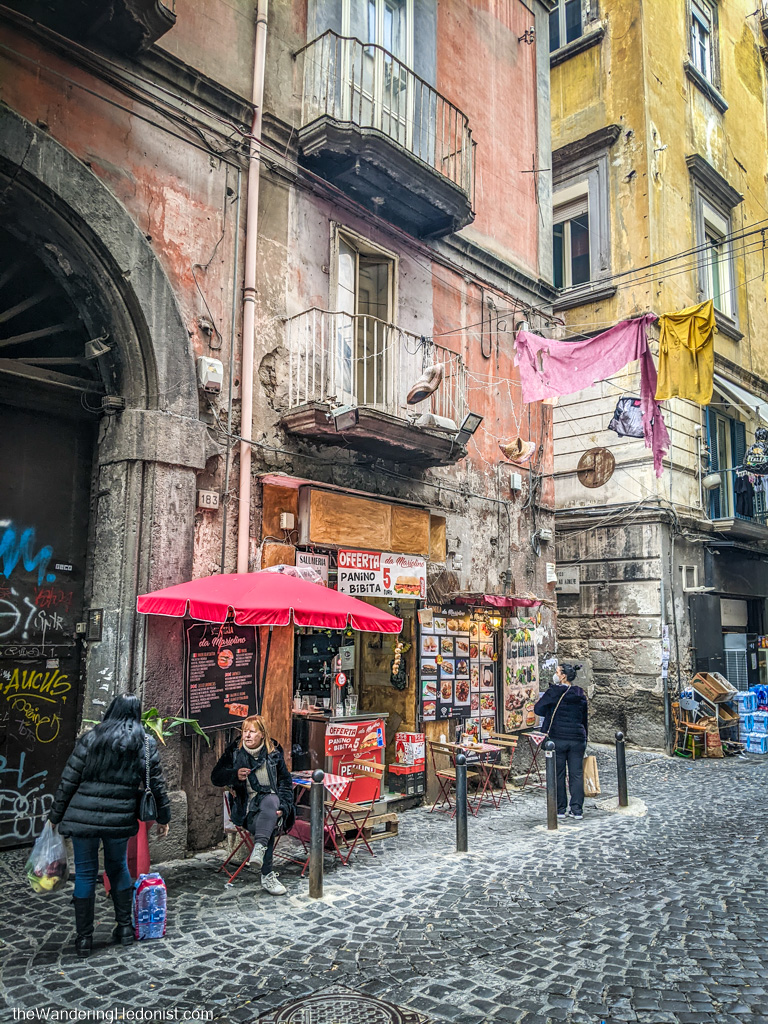
Naples. A jungle of antiquity and life. An endless reticulated tangling. Layer upon layer. Thin lanes dotted with shrines and gestures for one god until the next. The winding and meshing traffic flowing like blood through veins, eschewing rules for chaos, allowing the flow to sort it all out. A mystery of patience and impatience. Overflowing pressured emotions and surprising calm understanding. A passion, for old good things and for new things. A neolithic continuity careening headlong into a messy future, a continuous stirring of the pot, an unstoppable coriolis dredging the city’s roots up in equal suspension to the new forces that will continue to shape it, like glitter stirred within a glass. An explosive snowglobe of humanity. And really good pizza. Don’t forget about the pizza.
Naples is one of the oldest continuously inhabited cities in the world. Like 2800 years old. The area was inhabited in the neolithic period and the first Greek settlements date back to around 1000BC. Greek sailors from Rhodes established a port on the island of Megaride called Parthenope in the 9th century BC and in the 6th century BC it was refounded in its current location as Neápolis.
Naples is not the shiny city of Florence or the grand city of Rome. It’s rebellious. Plagued by corruption, unemployment, and significant control by the Camorra, the local mafia-like crime organization dating back to the 17th century. The traffic situation feels more similar to India than western Europe where, like most things, the laws are merely suggestions and almost anything goes. The city has a bad reputation and a noticeably seedier ambiance. But to me, it’s romantic.
When you travel Rome and wonder how all of this antiquity could be churned under and forgotten, you kind of get your answer in Naples. The old Roman gates and towers, the crumbling churches, the still lingering statues and masterworks of the past, all slowly succumbing to the march of time, to people building things out of necessity on top of that which is there. You can imagine it all disappearing completely only to be mysteriously rediscovered some long time in the future.
Naples really did turn out to be the Naples of my dreams. All of it. As messy as it was.
Walking the Spaccanapoli
Spaccannapoli is the colloquial term for a narrow street that cuts straight through the heart of Naples Old District. A madness of claustrophobic congestion and layered antiquity. Tiny hip bars, pizza joints, and salumerias edged in on all sides by tourist shops and trinket salesmen, dotted with puzzle-piece squares with old statues and decaying churches, the burr and ganky honks of scooters zipping through the crowds at dangerous speeds, tourists and locals alike, a steamy hodge-podge soup of every type of thing all at once. The messy complex heart of Naples.
Spaccanapoli means literally “Naples splitter” and is the lowest of the original 3 east/west streets or decumani of the Roman city of Neapolis then called Decumanus Inferiore. The modern street name is Via Benedetto Croce. This street along with the Decumanus Maggiore and Decumanus Superiore were crossed with many north/south streets forming the city’s original grid.
Walking down Via dei Tribunali
North of Spaccanapoli running parallel is Via dei Tribunali, once the middle central Roman street of Decumanus Maggiore. It has a similar spirit as Spaccanapoli but with a bit wider streets and a constant stream of cars weaving with the scooters blazing down tiny streets skimming pedestrians by mere inches and not slowing down a bit. You’ll find some of the bigger attractions here like the original Sorbillo pizzeria and the entrance to Christmas Alley, lots of tour groups following people with numbered flags, and a bit less of the hips bars, but it’s definately worth the time to explore. It’s connected to Spaccanapoli by a series of narrow north/south allies and tunnels that have a lot of derelict charm.
Local dishes in Naples
When I think back to the ubiquitous red-sauce pre-fab Italian joints in my hometown, what Americans think of as “Italian food”, what they’re thinking of is essentially Neapolitan food. Waves of Neapolitan Italians were some of the first to arrive in America, bringing with them their food, heavily adapted to the kinds of ingredients you would find in New York at that time. Especially better access to meat and no access to Neapolitan greens. Small meatballs became large meatballs. Small plates of spaghetti became large with lots of meat added to the sauce and even meatballs in the pasta (unheard of in Naples). The formidable NY slice. It’s something that has become solidly an American cuisine on its own. But back in Naples, the food hasn’t changed all that much. And it was fun to track down the original traditional dishes of the region. With my injured foot, I couldn’t get out as much as I had hoped but luckily delivery was easily available and I took full advantage of it. I did manage to get in my Neapolitan pizza experience and a couple of decent meals out though.




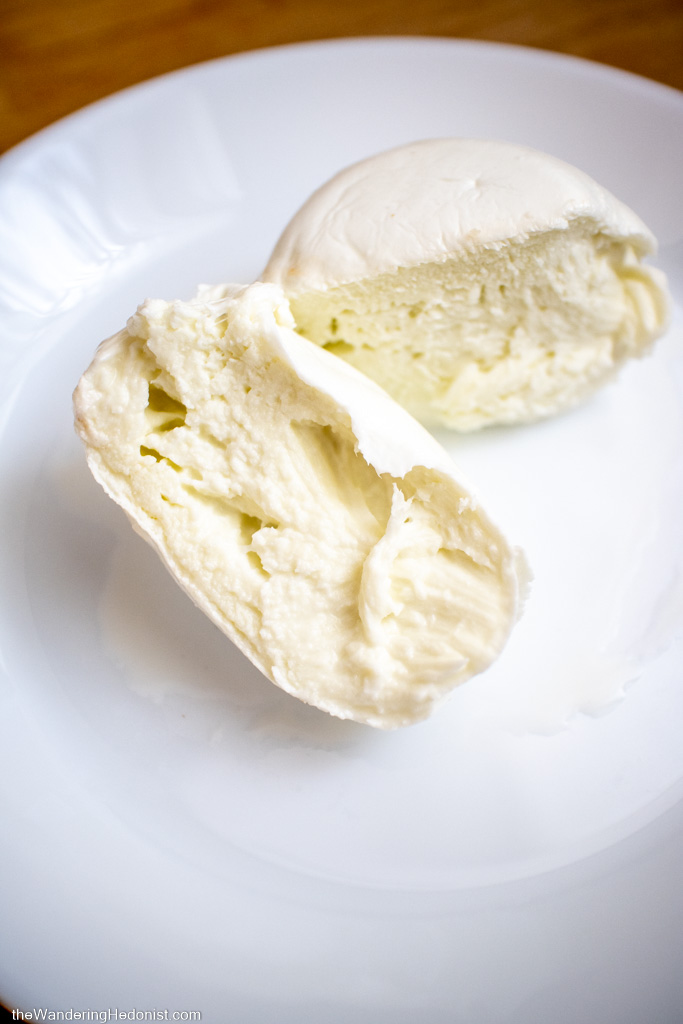


Our Neapolitan pizza experience in Naples
This one was important to me. I wanted the quintessential Neapolitan pizza experience. The standard by which to measure all other pizza. The mother pizza. Unsurprisingly Naples is packed with pizza joints. You’ll find one on every block. All serving decent pies. But when it comes to the “best” pizza, you’ll run across lots of debate.
Neapolitan pizza is highly regulated as a food of origin and there are standards to what it means to make it. There’s even an agency to enforce those standards, Associazione Verace Pizza Napoletana. The dough must be made with type 0 or 00 high protein wheat flower, natural Neapolitan yeast or brewer’s yeast, salt and water, formed by hand no more than 3mm thick, and cooked for 60-90 seconds in a 485C(905F) wood-fired oven. Tomatoes must be San Marzano or Pomodorino del Piennolo del Vesuvio that grow beneath Mount Vesuvius. The cheese must be Mozzarella di Bufala Campana from water buffalo raised in the marshlands of Campania and Lazio in a semi-wild state, or Fior di Latte, a cow’s milk mozzarella designated of local food origin (TSG). Generally speaking, people tend to order either margherita or marinnara and some places only serve those two types but usually there are many varieties to choose from.
After a bit of research and mapping out various best-pizza lists, what started to emerge is Gino Sorbillo. Gino Sorbillo is considered by most the best pizza maker in Naples and his original restaurant La Pizzeria Sorbillo in the heart of Via dei Tribunali serves consistently the best pies in the city, winning best pizzeria by Gambero Rosso, Italy’s most respected food guide and recently winning the Neapolitan Pizza Championship. It’s even listed in the Michelin Food Guide. Not bad for a little pizzeria. So we took a cab down and stood in the rain for over a half hour to snag a table (this line is regularly 1-2 hours long). Fortunately there’s a place right across the street selling Aperol spritzes to drink while you wait. (Tip: the sign says 2 euros for a spritz but that’s for a tiny small. Medium is 4 euros, but the owner will pretend he doesn’t understand your English and make you all larges for 5 euros each. Just go with the large initially and don’t be surprised. It’s overpriced but what the hell.)
I ordered the buffalo margherita. Classic. Katy went with one with meat but we can’t agree on what she had so I won’t erroneously name it. But it was good.


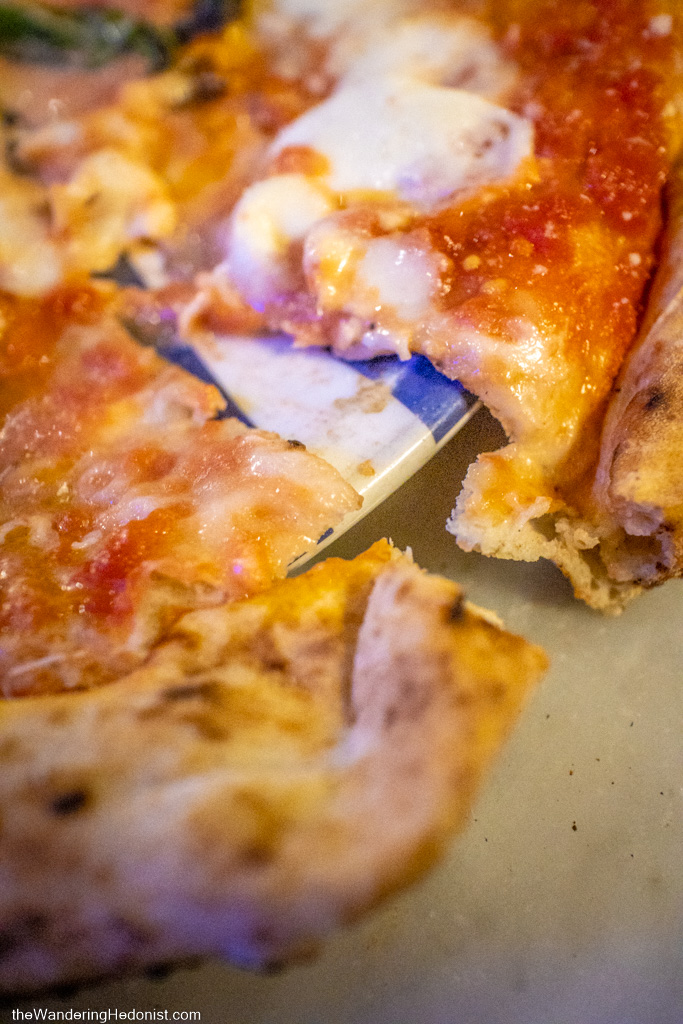




Our best meal in Naples at Cuccuma Cafe
Our pizza experience was great but if pressed I would say that our best meal in Naples was one that we wandered into by sheer luck and hunger. After a bit of rest I finally got to walk around old town a bit until my leg was too tired to go on. Hungry, in the rain, we pass by a door in an alley with a menu outside. Cuccuma Cafe. Basically you order one type of pasta for the table. You pick the style and there’s a cost per person. Then you get as much pasta as you want in grams. We picked the Monsu with sausage, pepper, peas, tomato sauce, pecorino cheese, and mozzarella and let the chef decide the portion.
Created by Chef/owner Achille Munari, chef and creator of the ragu at Tandem Ragu, the restaurant focuses on a slow casual mood like you’re in a friend’s house. A very cozy seating area sits beside an open kitchen that looked more like grandmas than a restaurant kitchen. Chef Munari was very lively and sung loudly while he cooked. And our host was friendly and luminous. It really felt like you were being hosted by friends.
After an introductory snack, a huge plate of steaming pasta arrives, so much food that we didn’t think we’d be able to eat half of it. But it’s fucking delicious and we put down the entire thing. Ok, I think I was pulling a large portion of the weight here. But it was so good.
The after dinner coffee was a little traditional napoletan drip pot called a cuccuma or cuccumella that reminded me of Vietnamese coffee with a sugar/cream paste to sweeten. They seemed very proud of it.
We had a fabulous unexpected time and I highly recommend seeking this place out if you’re in the Via dei Tribunali / Via Benedetto Croce old town area.
Fold-up pizza at Tutino
One of the things I was truly excited about when visiting Naples, and I don’t even really know why, was this concept of a fold up pizza I saw on a travel show a long time ago. A street vendor folds a full pizza into quarters and hands it to you wrapped in paper and you eat the whole thing like a doughy ice cream cone of goodness. This style of fold up pizza is called “portafoglio” or literally a pizza wallet. Of course you can fold any pizza up to go, but a few places specialize in this type of pizza. Having limited range, I found a humble portafoglio joint near Porta Nolana and the fish market by the train station. This area of town is pretty sketch and we had a truly working class lunch experience at the rain covered tables on the sidewalk. The pizza was pretty meh, but it was fun to get my pizza wallet and at 2 euros there wasn’t much to complain about. There is a bit of technique I discovered when I accidentally poured tomato sauce down the inside of my raincoat sleeve while grabbing a bite. This is also when I discovered this place did not have napkins, just squares of grey paper that they wrap the pizzas up in.
All the desserts at Carraturo
As I’ve mentioned before I tore my calf in Rome and was pretty immobile for most of my time in Naples. I spent most of the week icing my leg in our apartment and when I did get out it was to the coffeeshop and bakery right below our apartment, which was delightfully convenient. Naples is a well known pastry crazy town and I had a list to seek out so at least I could do this right. The bakery also had a bar. Huzzah! So I would limp downstairs, order a double macchiato (that’s the thing here), a new pastry, and some alcoholic beverage, usually a different type of amaro.
The main pastry of the city is the sfogliatella (little leaves) which is a clam shaped pastry with lots of little layers that overlap and form a crispy ruffled crust, filled with a sweet ricotta custard type filling with little pieces of candied citrus and powdered with sugar. These things were fantastic! There’s a normal version called the sfogliatella riccia, and a simpler version that looks like a donut but has a crispy shell and puff pastry sort of inside filled with the same goodness, called a sfogliatella frolla.
Also popular, the Zeppole di San Giuseppe, a giant donut sized puff pastry filled with custard and topped with a thicker custard gel and usually cherries. Indulgent.
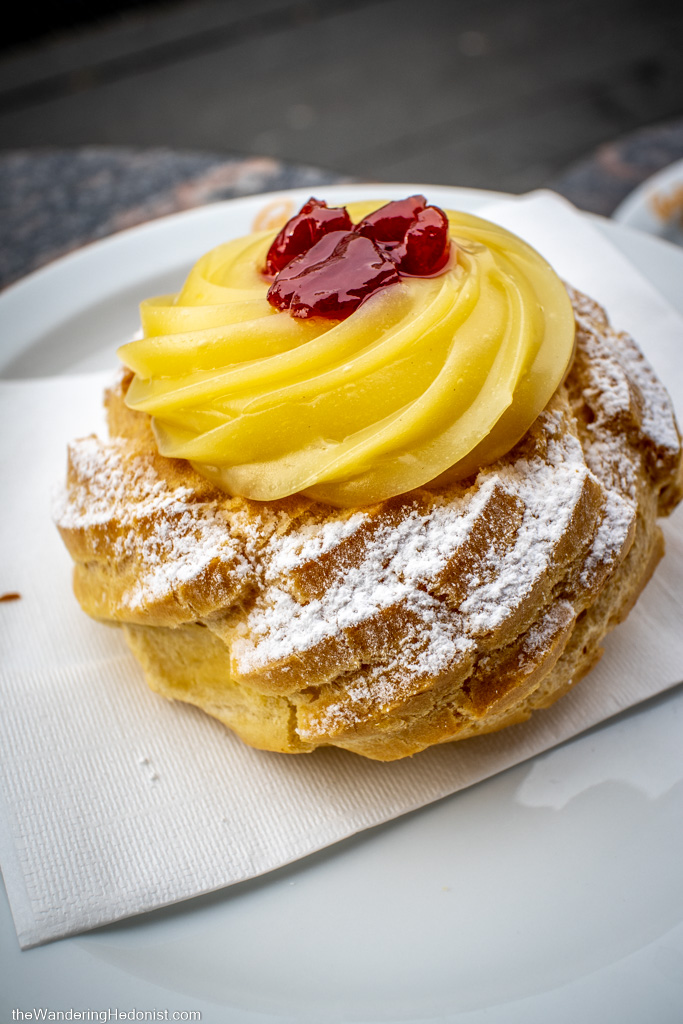




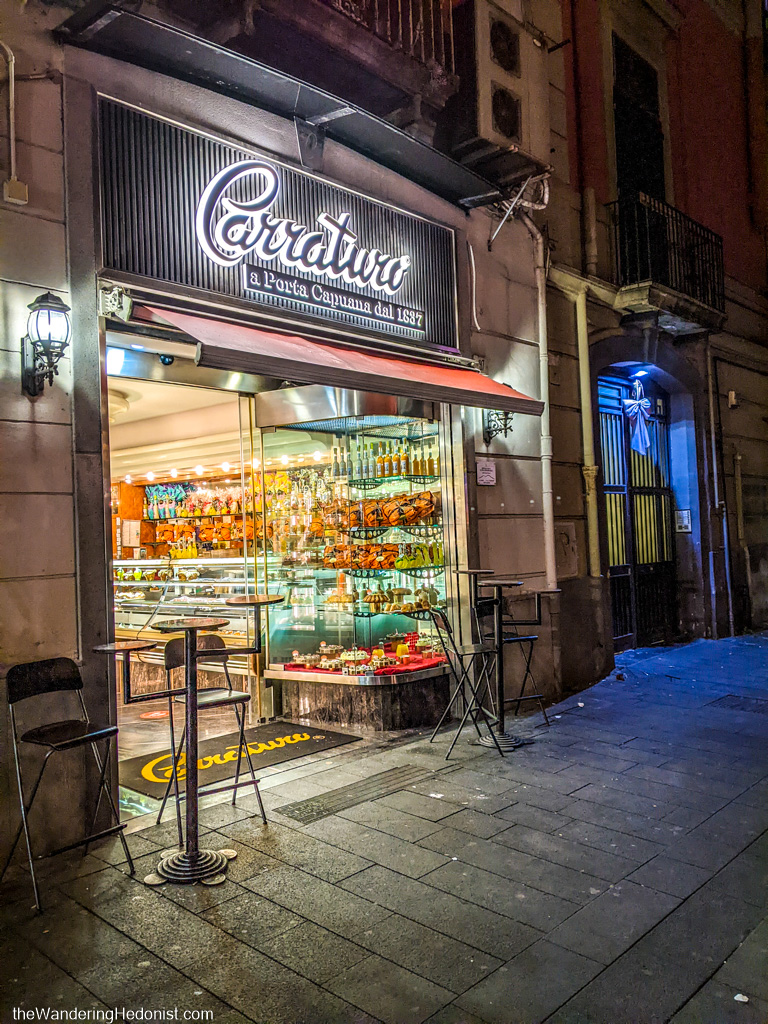
Shanti Art Musik Bar on Spaccanapoli
We ran into this cute bar on Spaccanapoli and felt so much at home that we ended up coming back a few times. Essentially a large tent erected in an alley attaching two small rooms in adjacent buildings, one a small full service bar, and the other a small room with a table and the bathrooms. A real burner vibe going on here. Trippy art and bohemian furniture made out of pallets.
Christmas Alley
Christmas Alley is a short pedestrian alley between Via dei Tribunali ane Via Benedetto Croce called Via San Gregorio Armeno. The alley is filled with shops specializing in Neapolitan nativity scenes called “presepe”. In Naples, nativity scenes aren’t just little manger setups but entire villages and can incorporate a large number of figures. Along with the wise men you’ll find all sorts of modern figures including pop figures, sports figures, politicians, etc. It’s a bit more fun. So the shops are filled with little versions of famous people. Some presepe are enormous, 10 feet high or larger, and some quite small and easily bought by tourists. I didn’t fully understand the tradition while I was there so now it makes more sense.
I ducked into a small tunnel off of the alley and discovered an interesting courtyard with a shrine and ancient looking apartments.
Our apartment on Via Casanova near the train station
I had originally wanted to stay inside of the old town area of Naples but we waited a bit too long to book and all that was left were small expensive apartments so I found a larger place that was much more affordable between the train station and old town. I knew the neighborhood would be a bit shabby and less interesting but it turned out to be a bit more sketch than we had planned on. The place had a real Brooklyn in the 80s kind of vibe. Lots of guys just sitting around on the street all day. Right at the edge of the immigrant ghettos to the east of downtown. A truly diverse mix of north and subsaharan Africans, middle eastern, eastern European, Italian, Mediterranean, occasionally but rarely Asian, and everything in between. Honestly everyone seemed to be getting along quite well. For the chaotic and frenetic energy of the place, I didn’t really see any conflicts. And I never really felt in danger. But I felt more on guard than I had felt since I left the US, where I feel on guard pretty regularly. The truly dangerous neighborhoods where the heroin trade is centered and controlled by the local mafia, the Camorra, are further north.

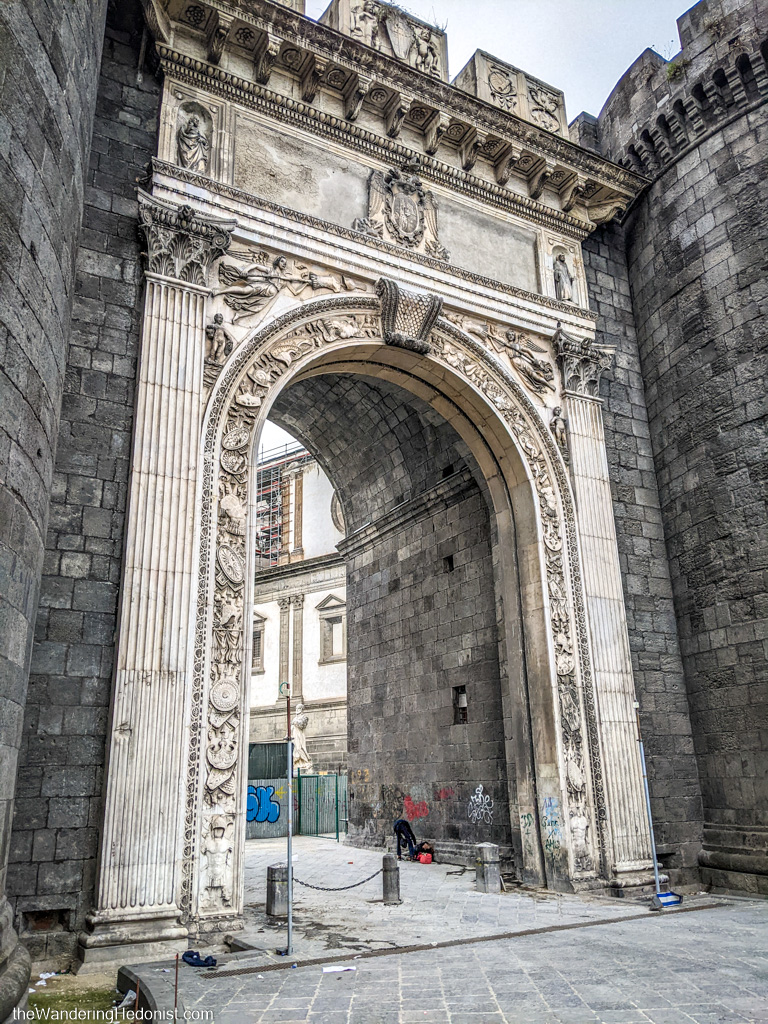


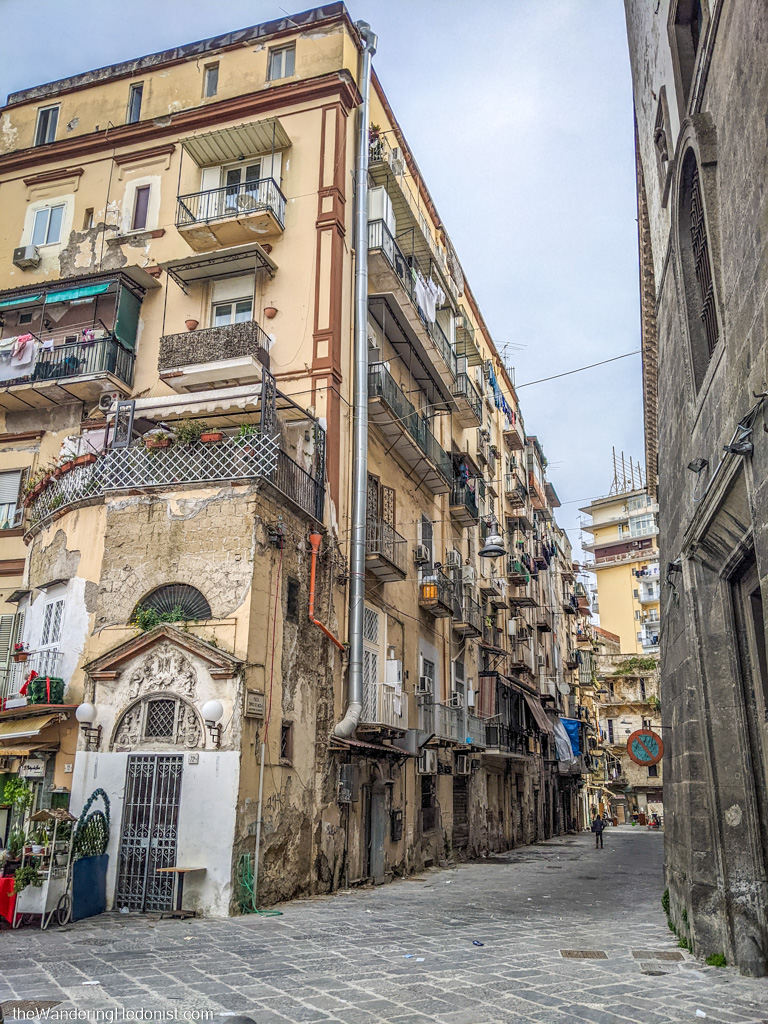
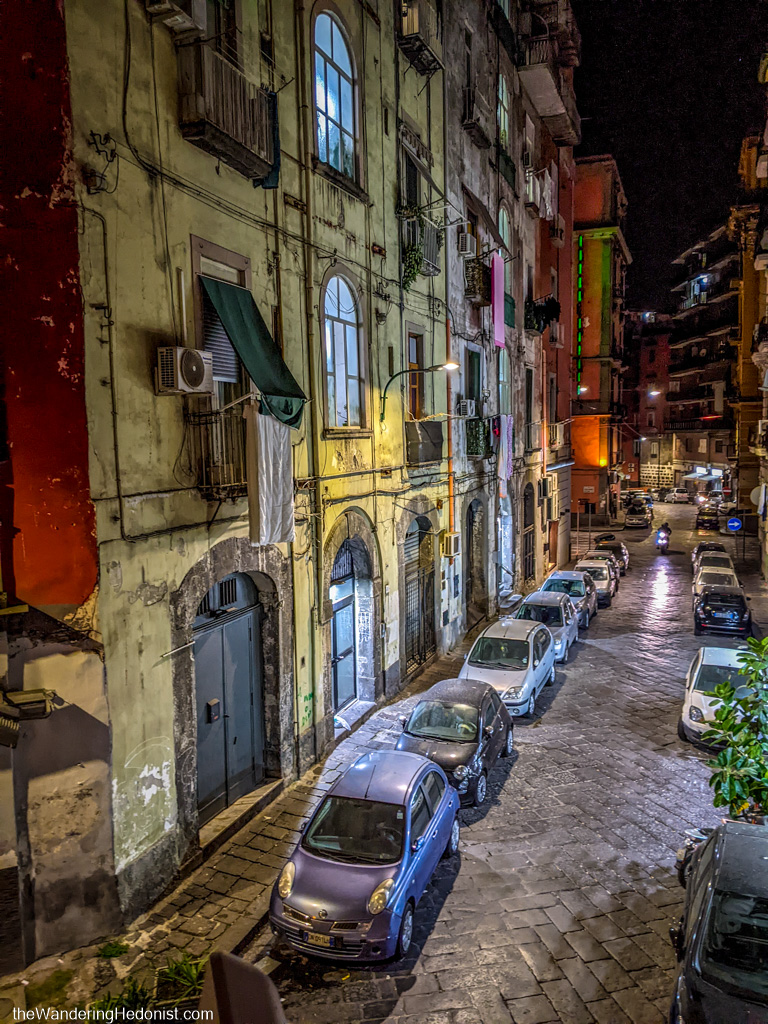
Porta Nolana
Another old gate through the original city walls can be found across from the train station called Porta Nolana and just on the other side a decent sized fish and seafood market. This neighborhood was honestly pretty sketch and I felt uncomfortable not being able to walk above a slow limp. But we were on a mission to find some foldup street pizza and the area looks pretty cool if nothing else. But I wouldn’t go wandering around here at night. There were a lot of characters that didn’t look like they wanted to be captured on camera.


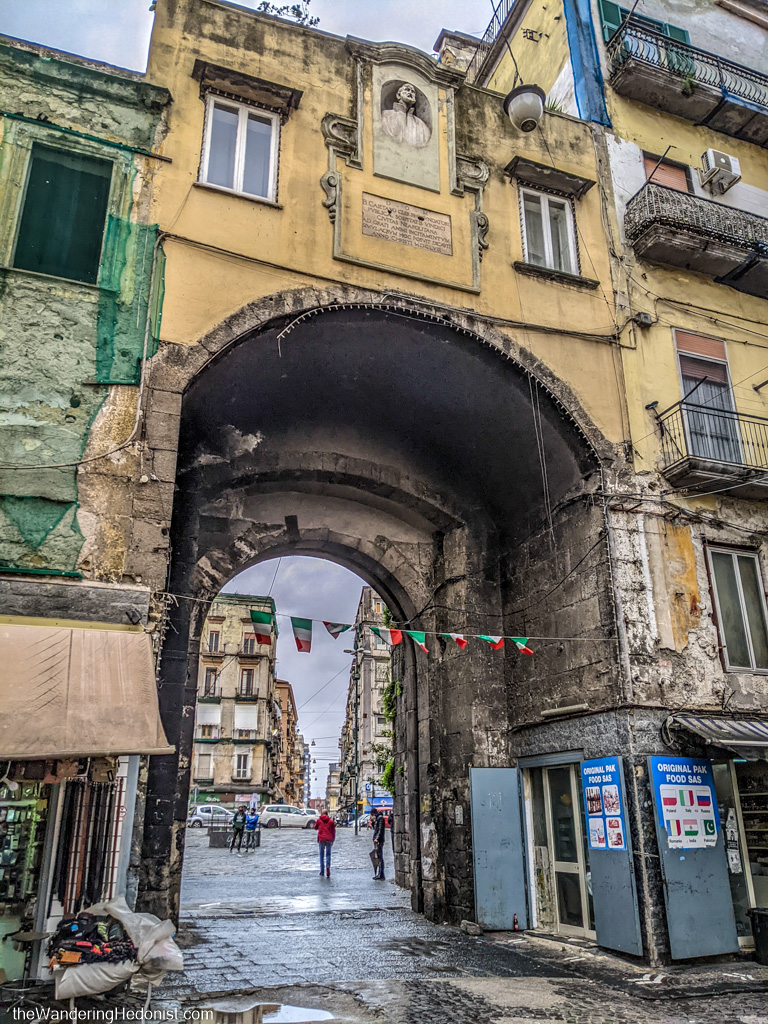


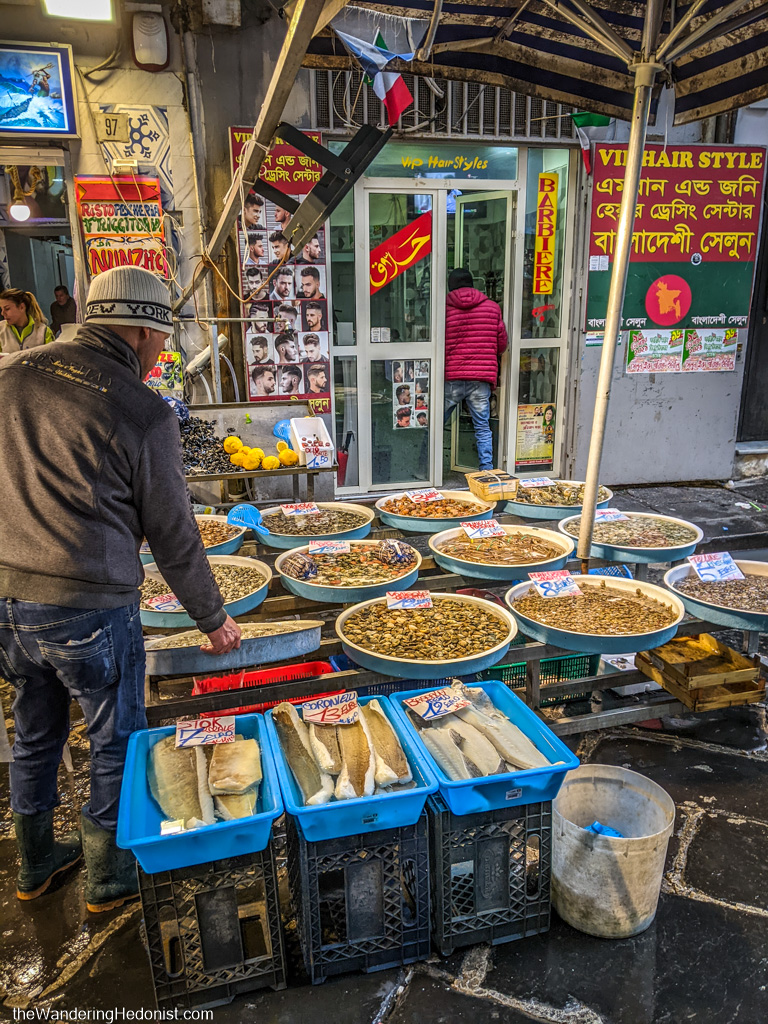
Shrines
You would be hard pressed to walk a block through old town without passing a shrine of some type. Usually built into walls of streets and allies, often depicting Mary and other saints, these shrines are everywhere, both large and small. Sometimes, often actually, dedicated to famous soccer players. Sometimes snapshots of a particular family member. Or to things I didn’t quite understand. Up high or down low. Majestic sculptures or humble decorated nooks in stone walls. It was fascinating to see just how many of these there were. I only captured a few.
Graffiti in Naples
When it comes to volume, ubiquity, or sheer size, I can’t think of another city with more graffiti than Naples. There’s the whole gamut of tags to intricate graffiti names to full multistory murals down every inch of the main roads of old town. Some alleys are covered entirely. And no one seems to really be covering them up. There’s a boldness that says that no one really cares that I’m spray painting this wall. And with that amount of time comes great pieces. I noticed many of the same artists active in Florence and Rome had pieces here too. And lots of new work. There was a Banksy that a local restaurant had installed a glass cabinet over to protect it with a large plaque. Not the only street pieces I saw protected by plexiglas installed by some business. I took so many photos. Here are only a small selection.

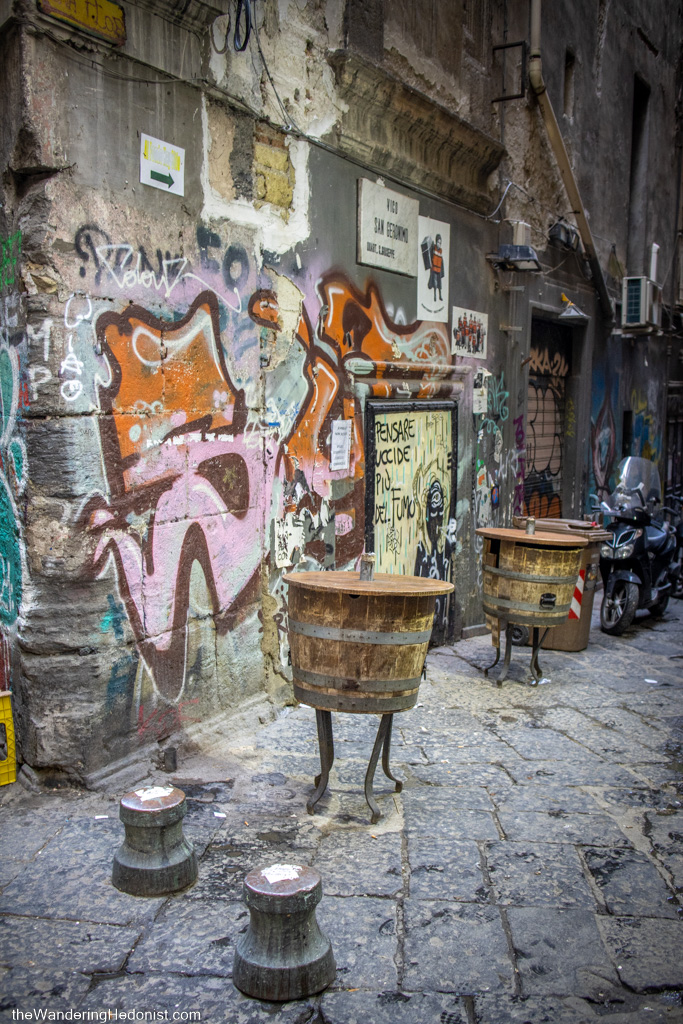

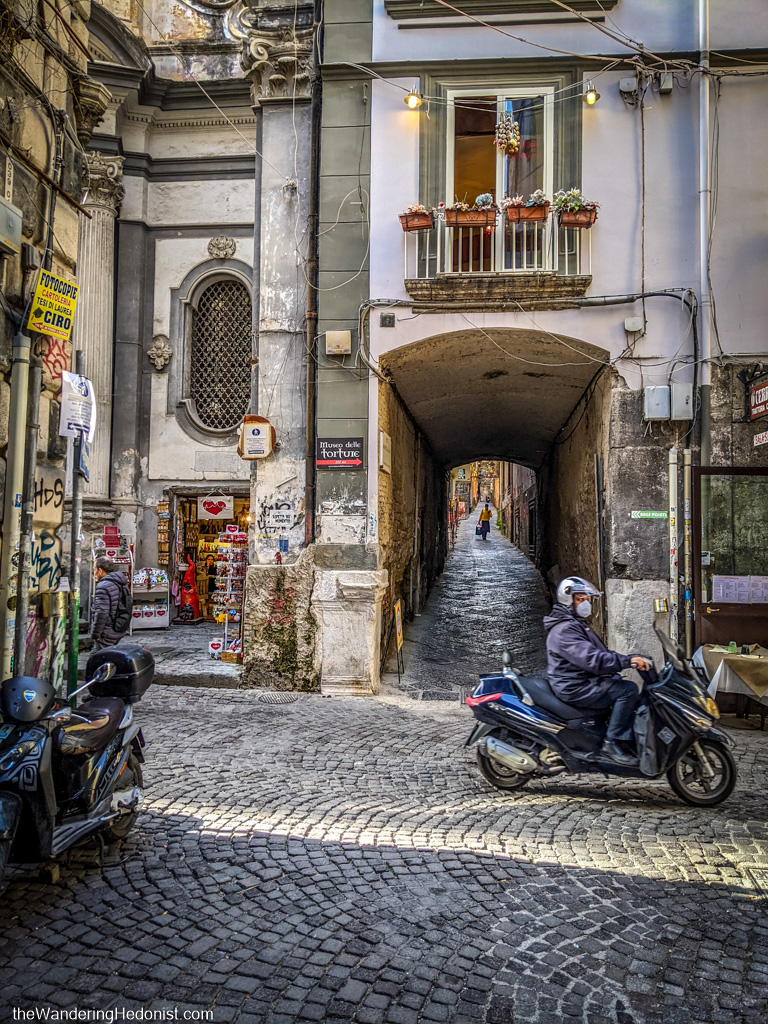


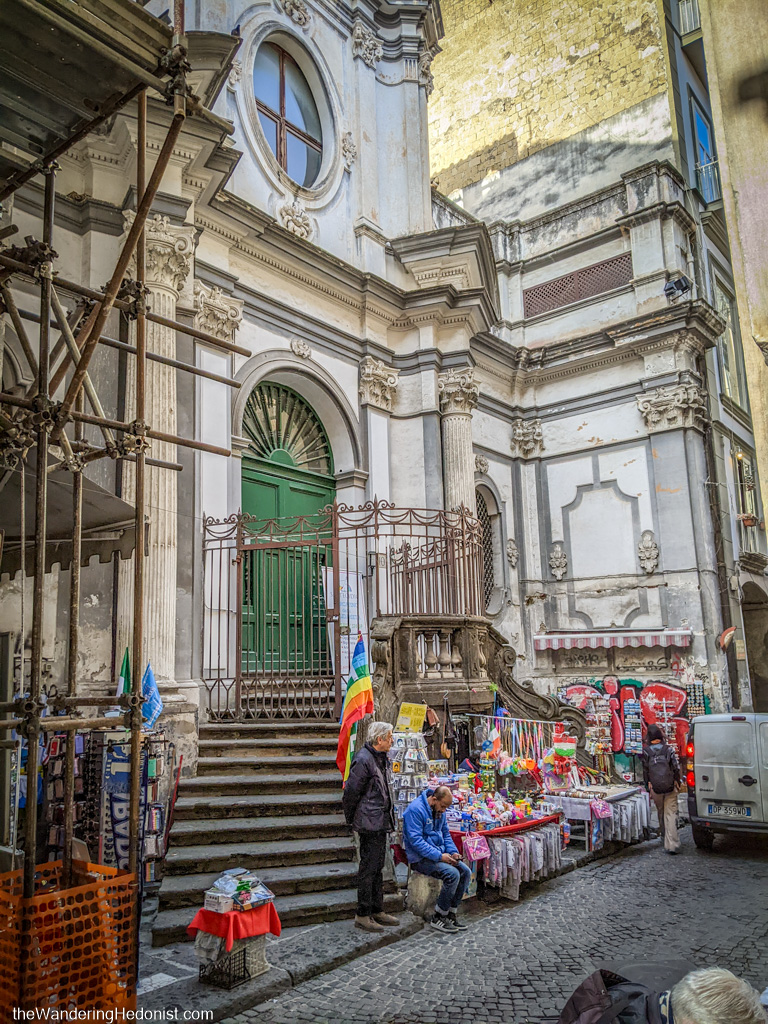
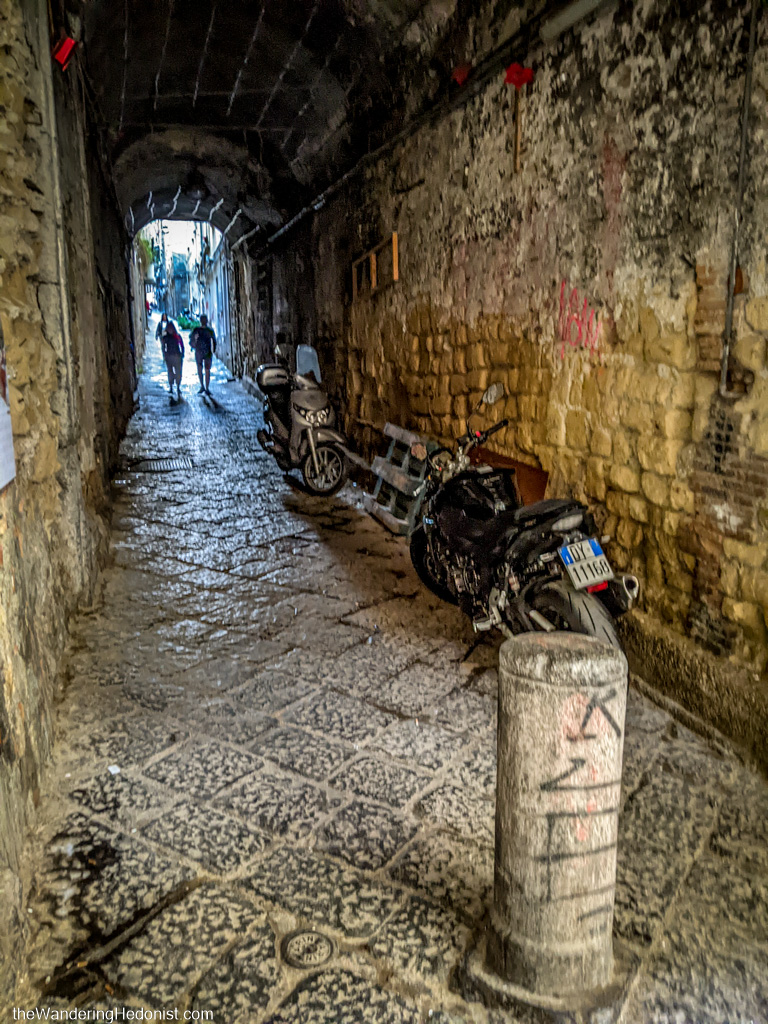
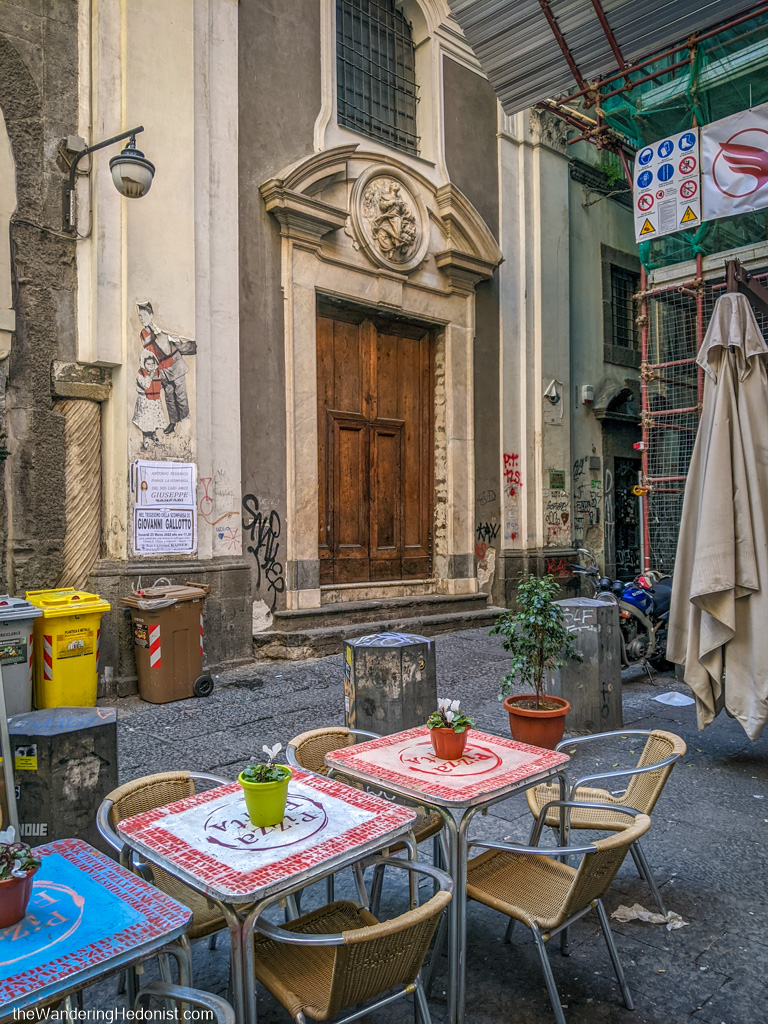



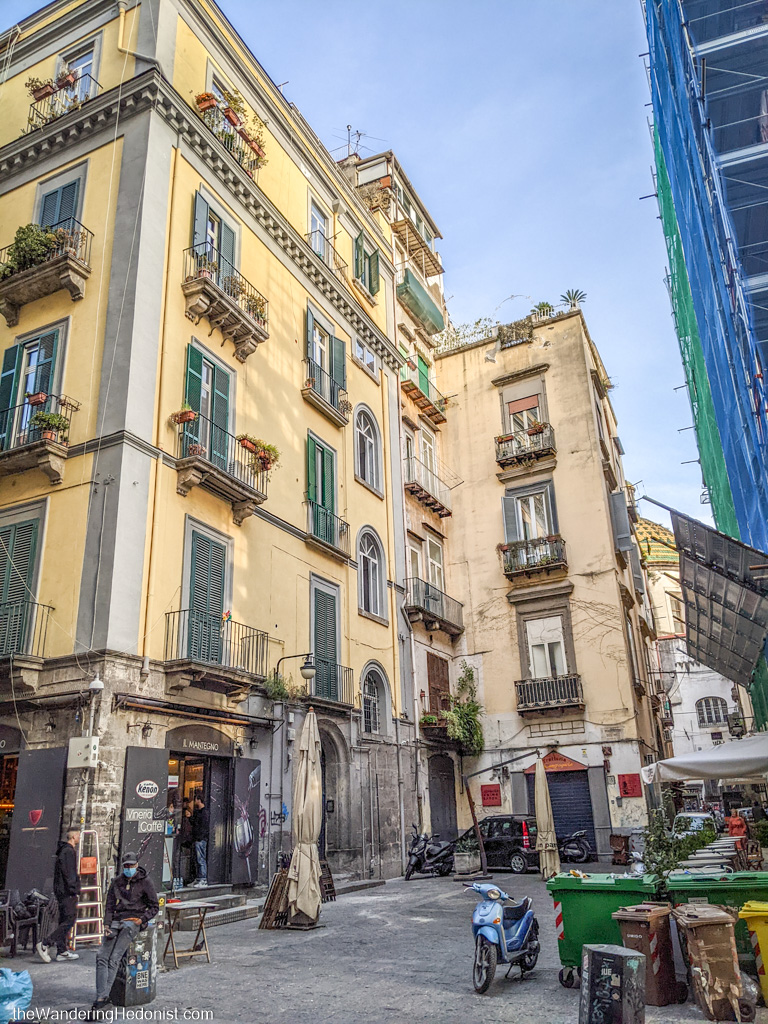
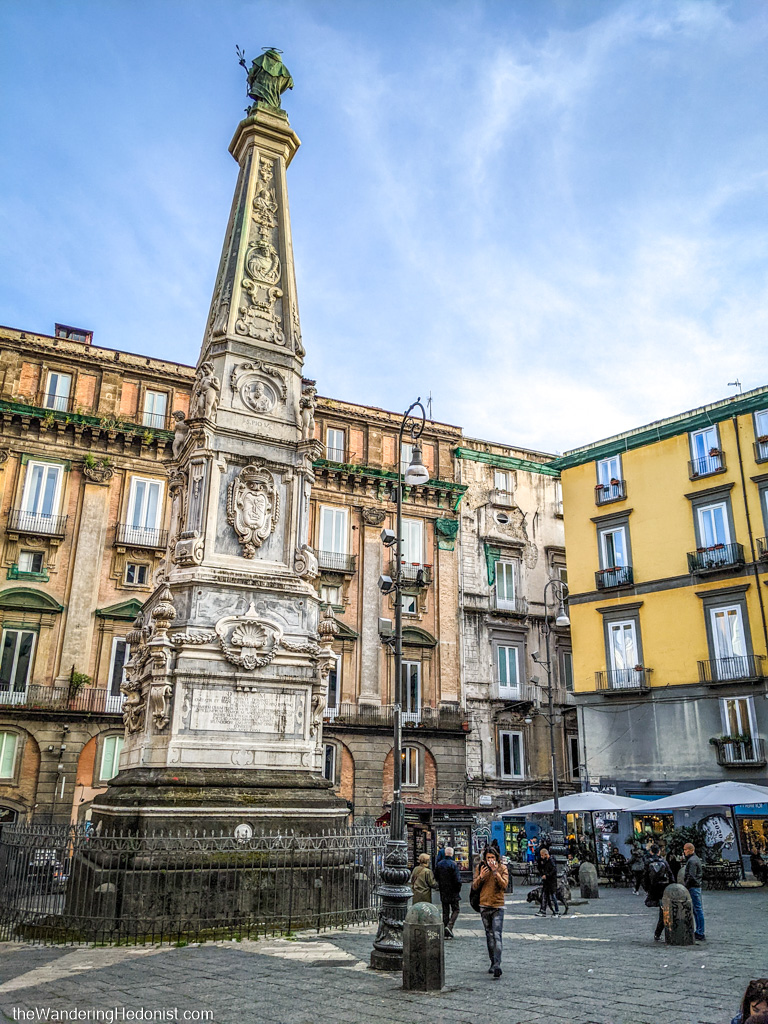
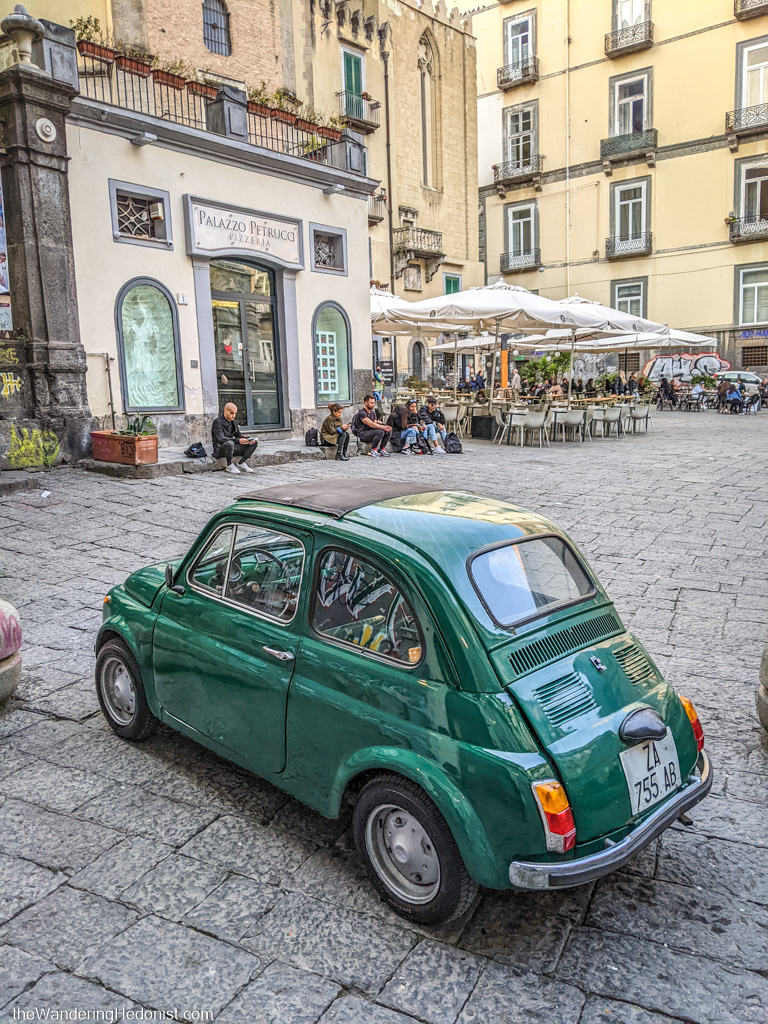




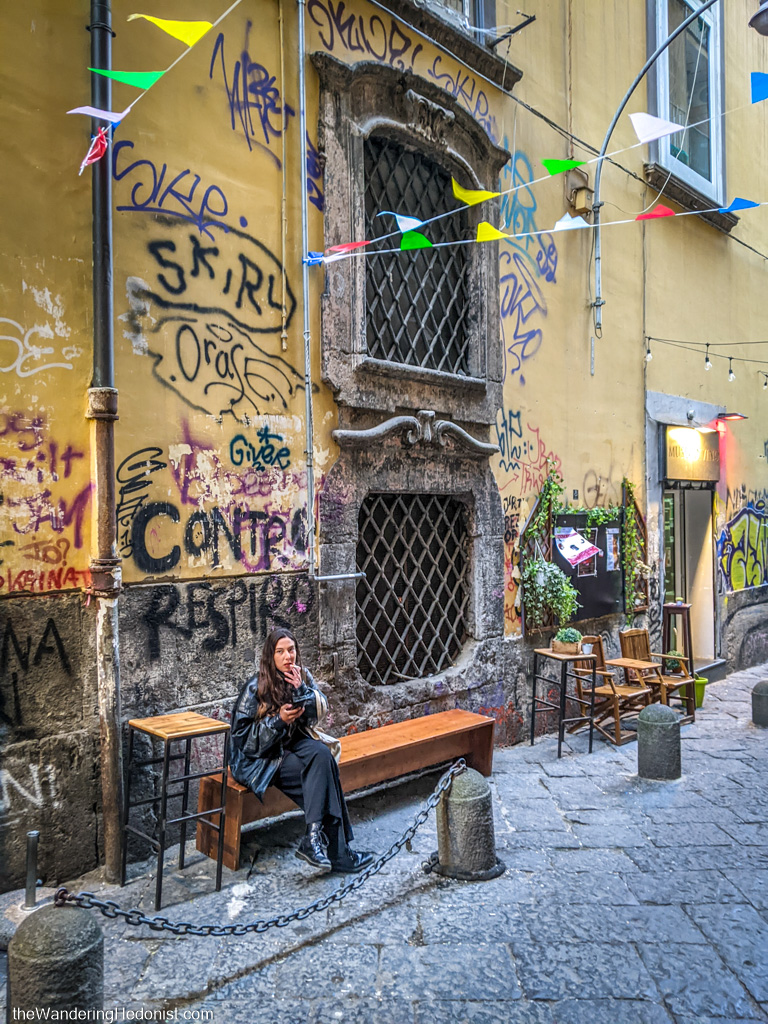




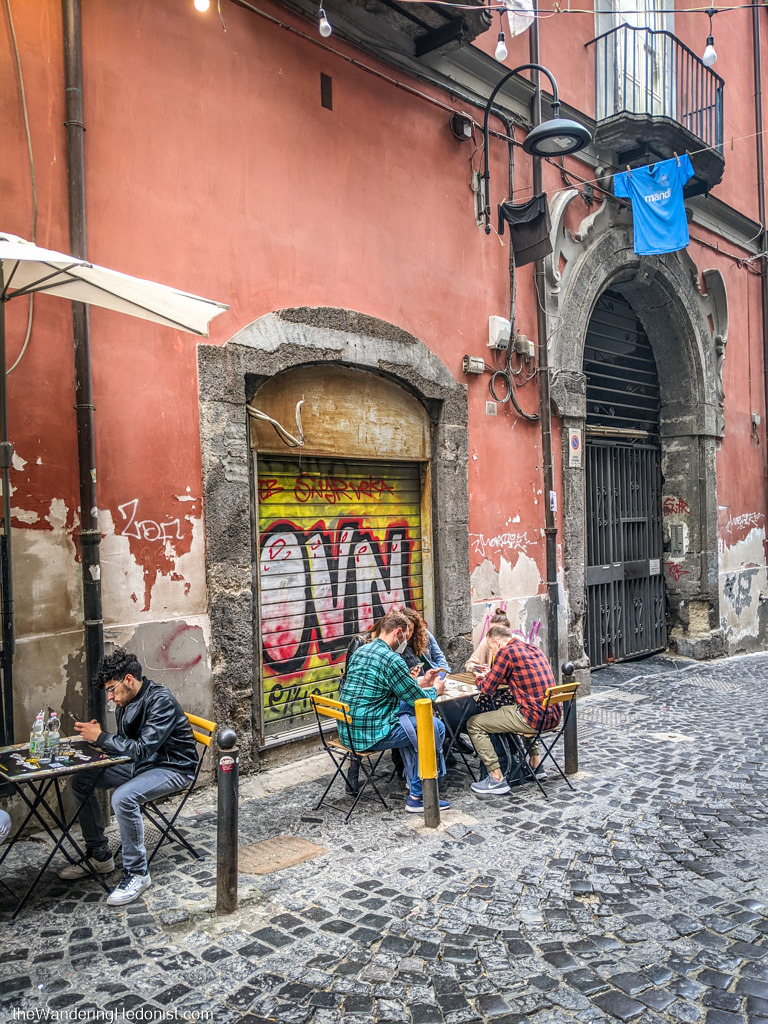



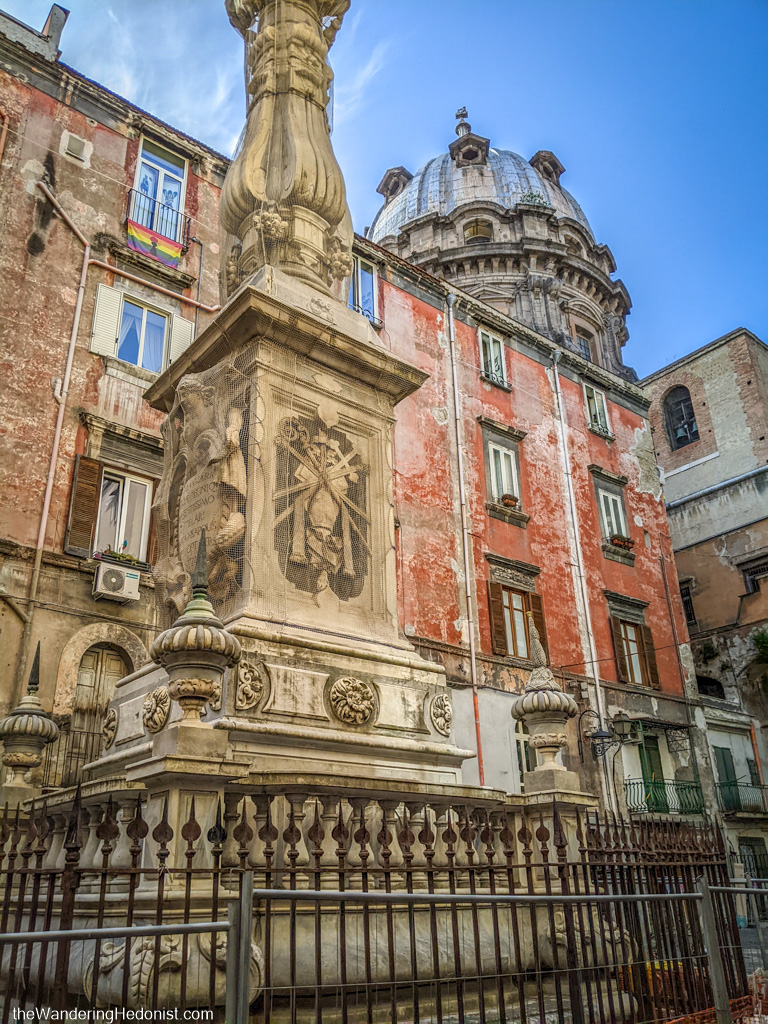



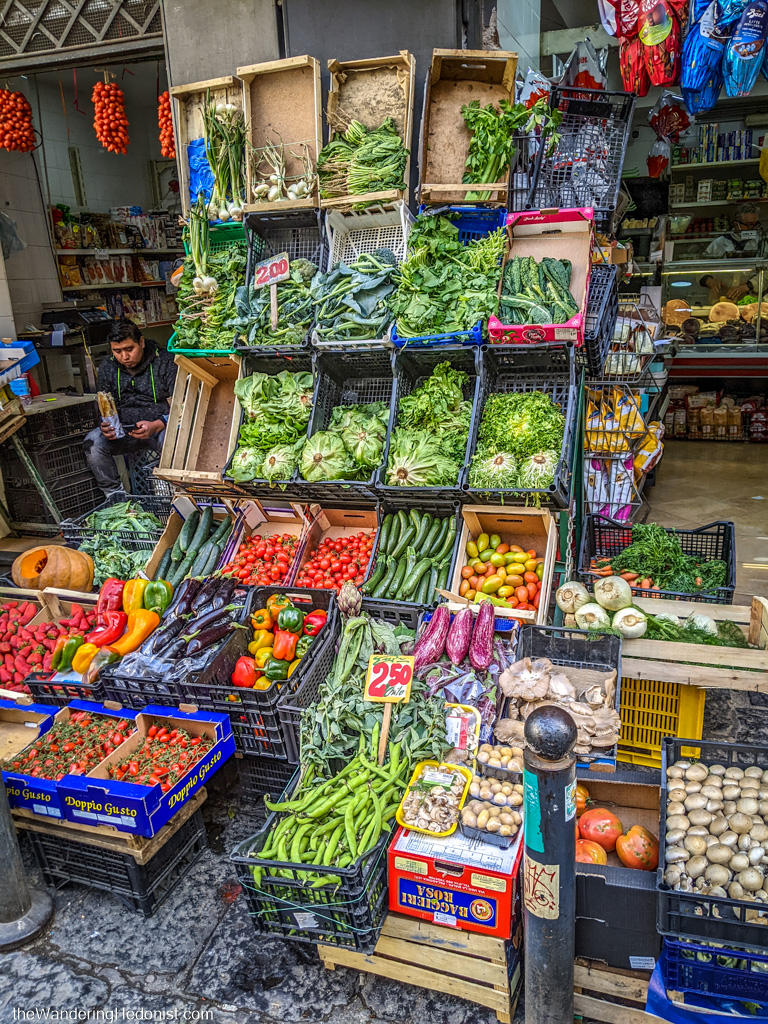

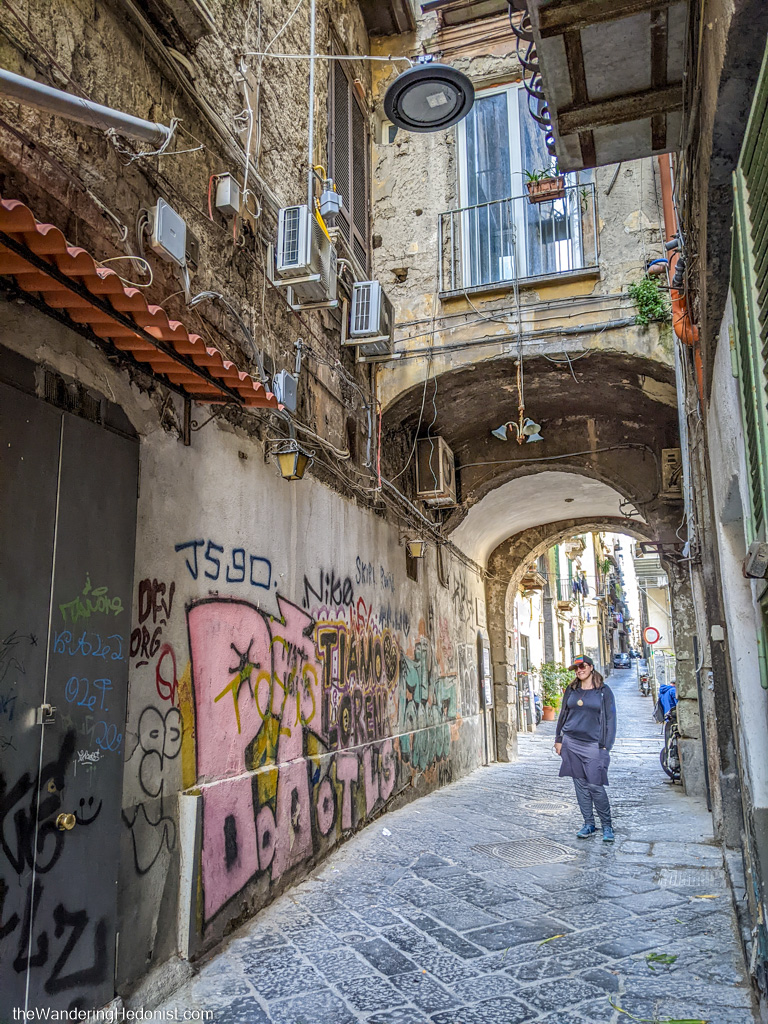

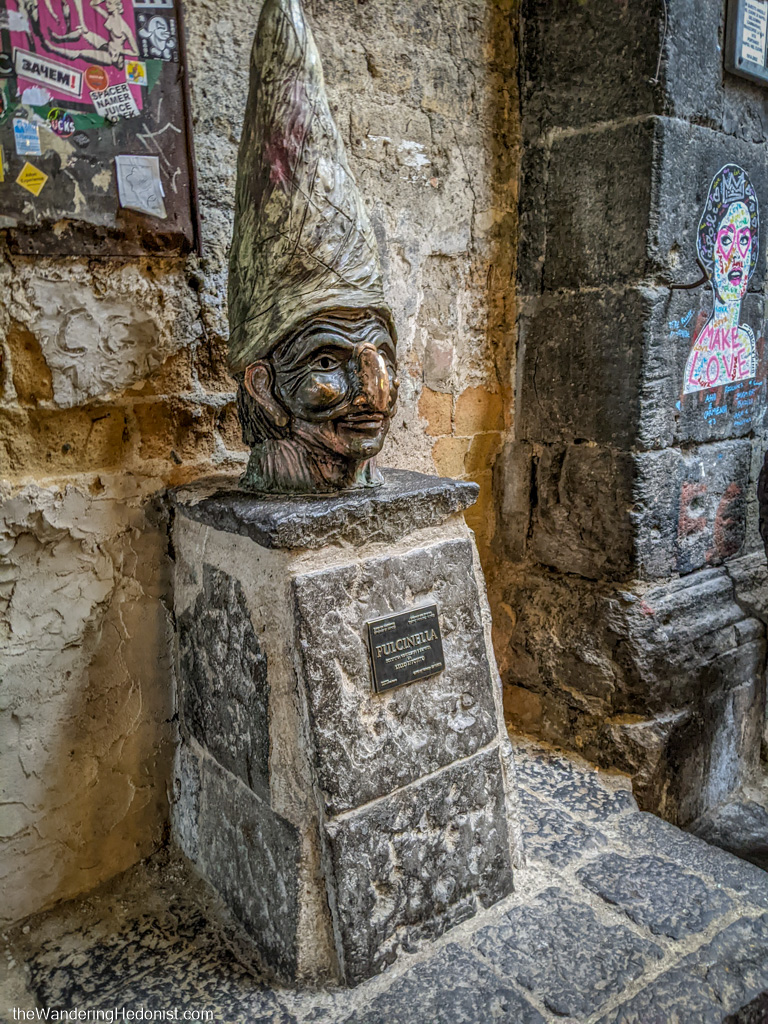



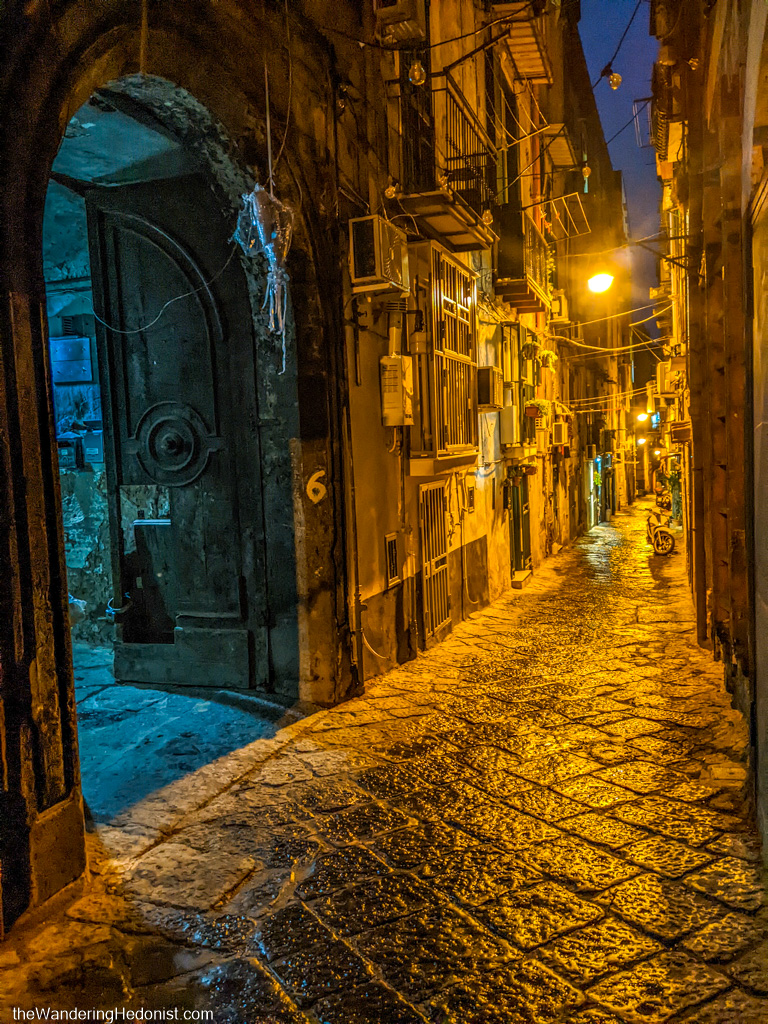








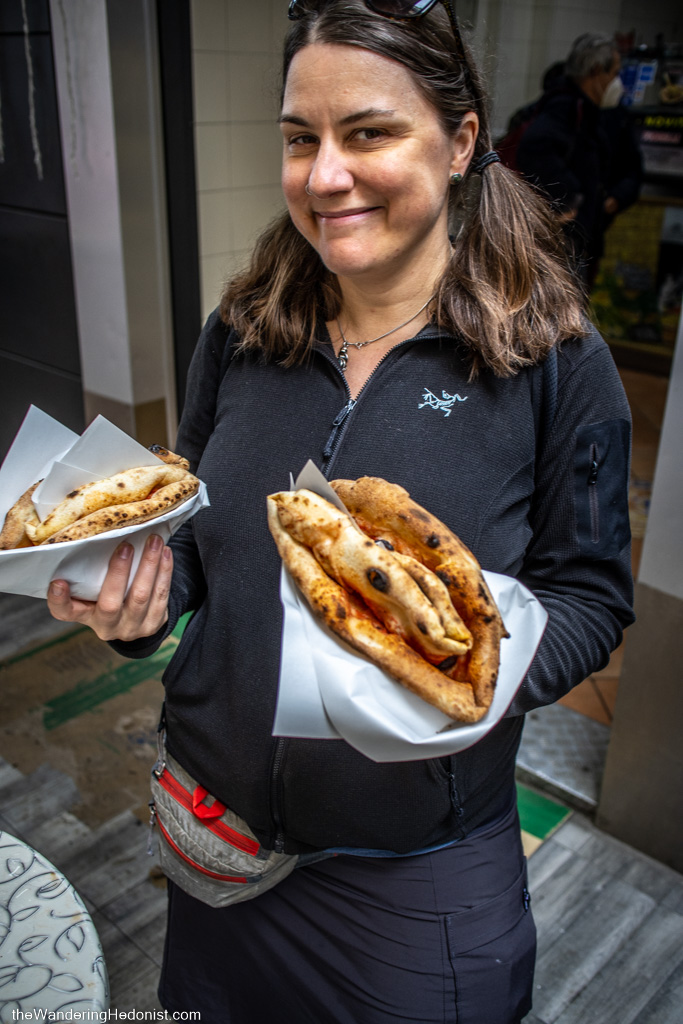











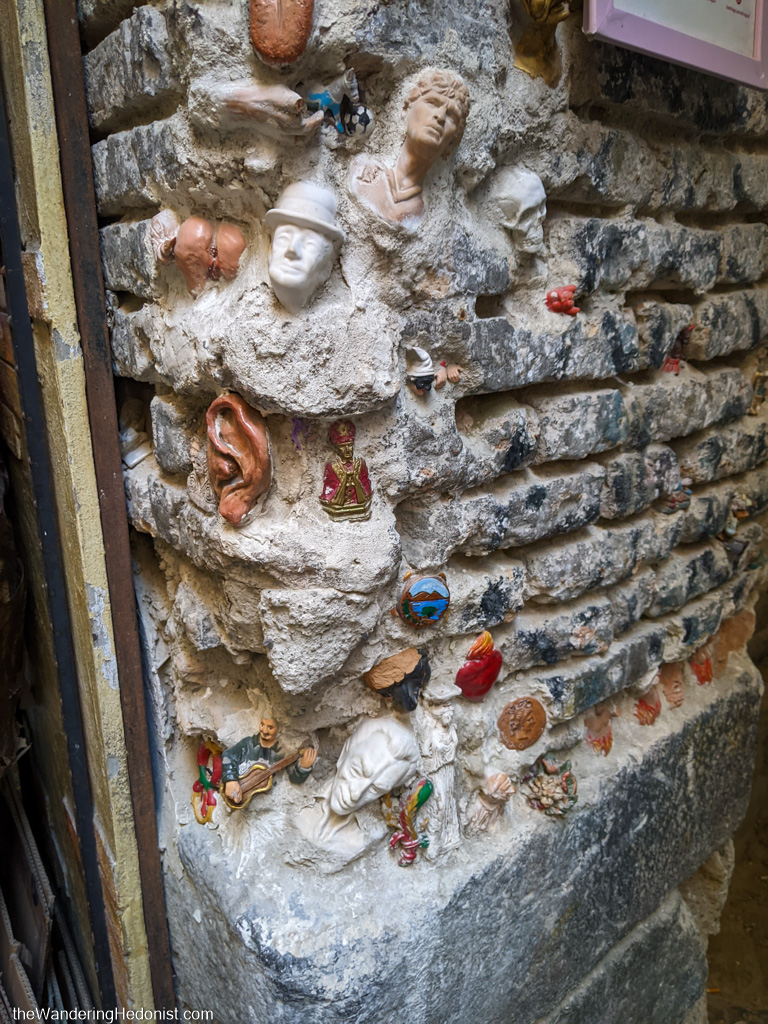









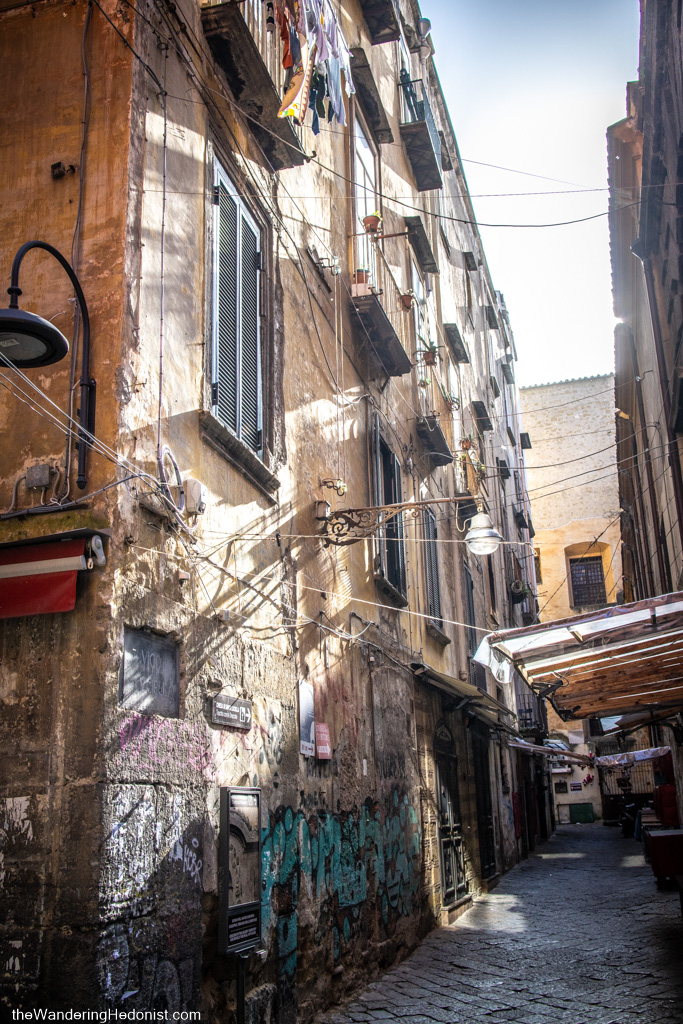


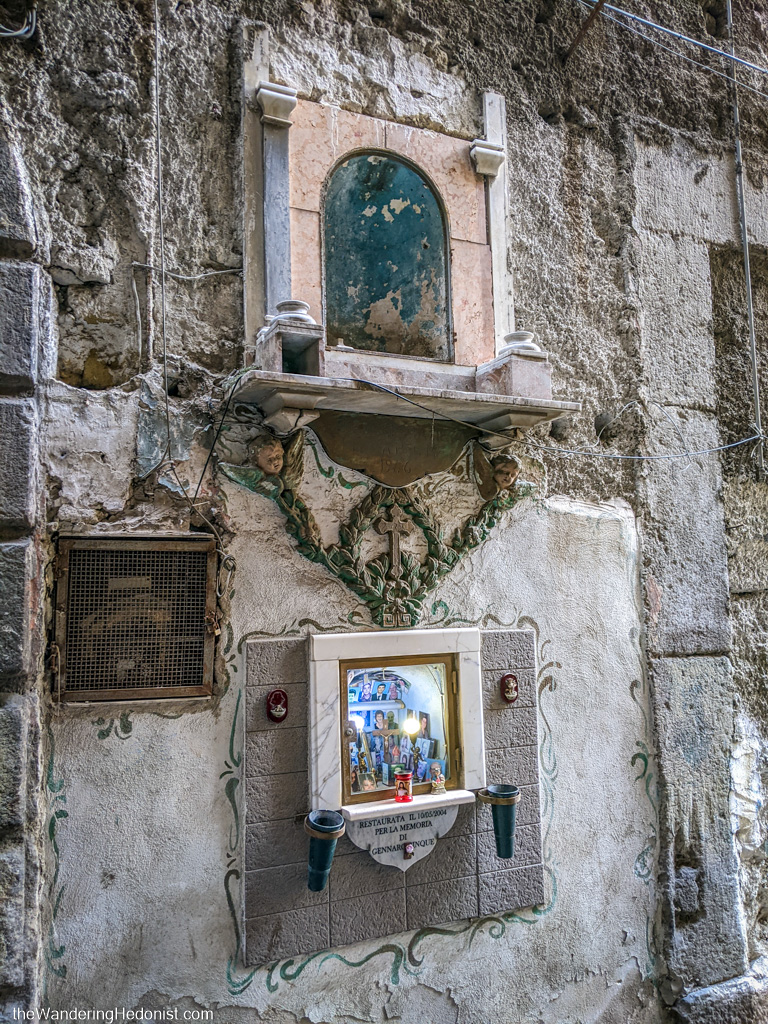




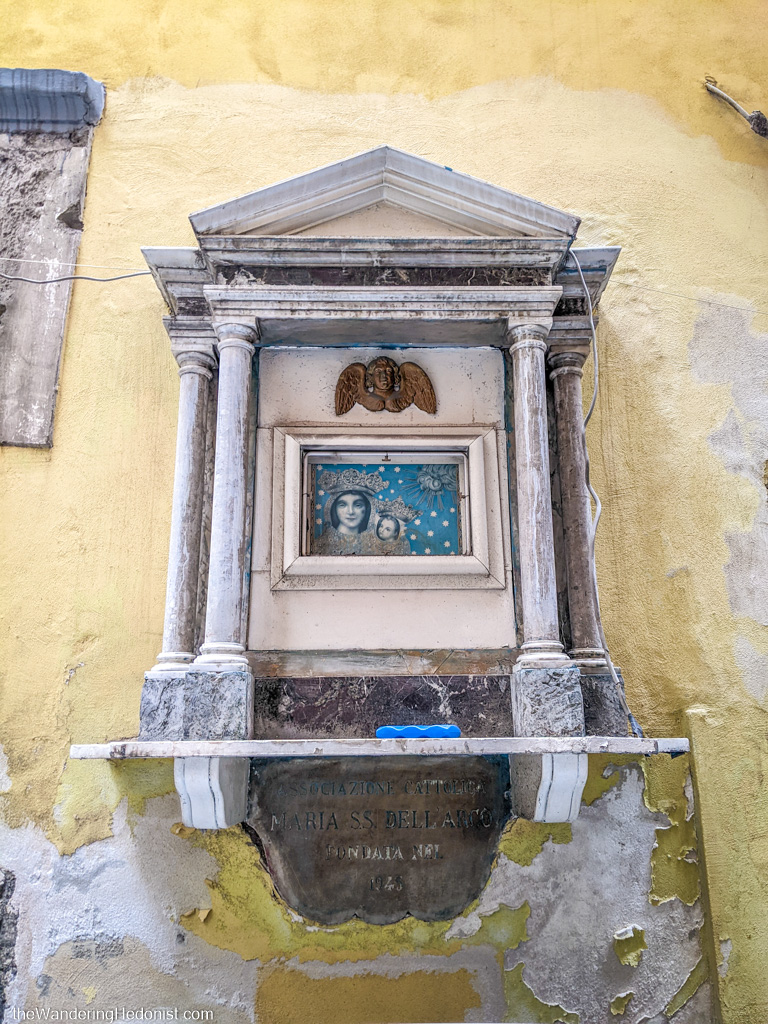


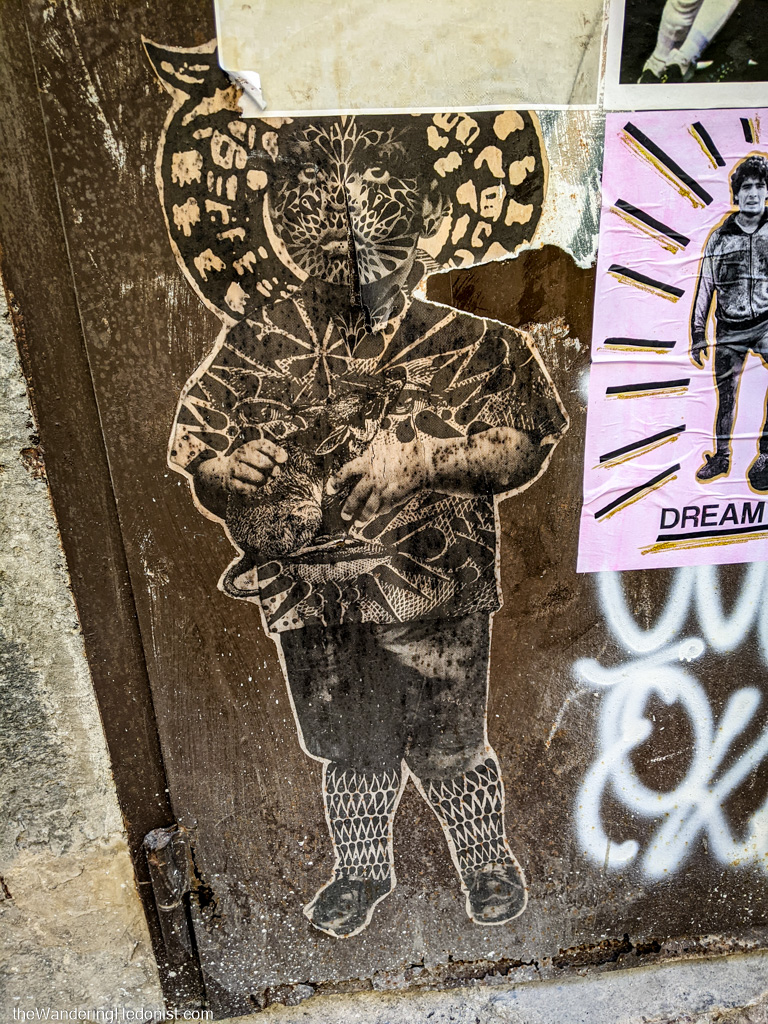





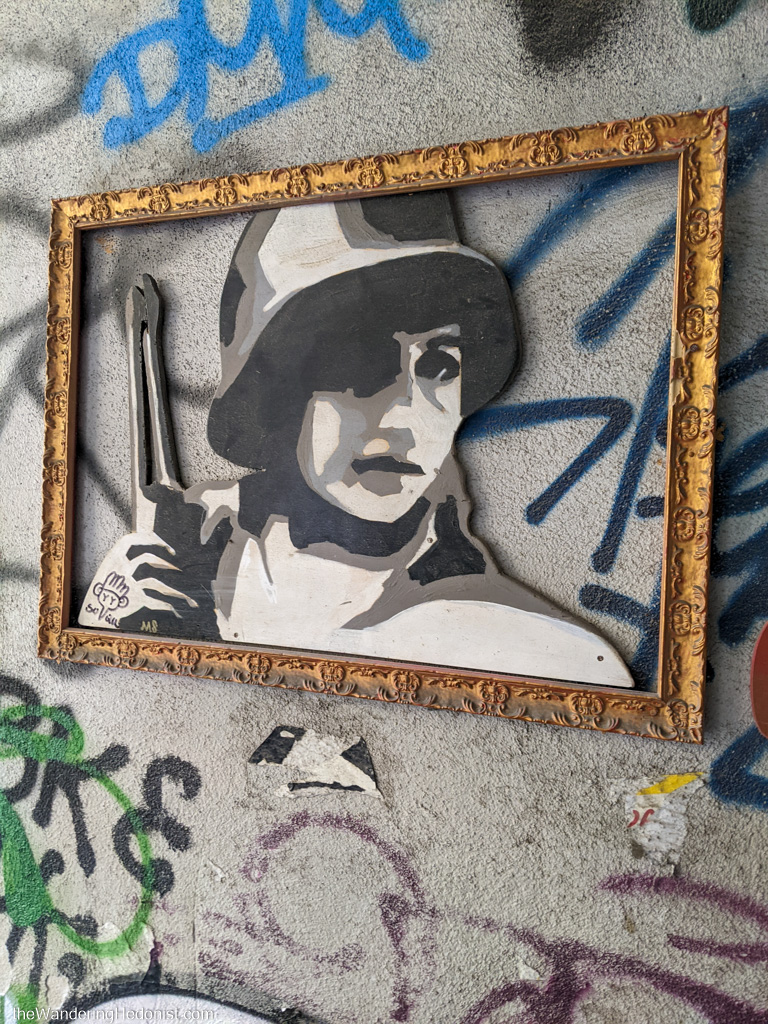



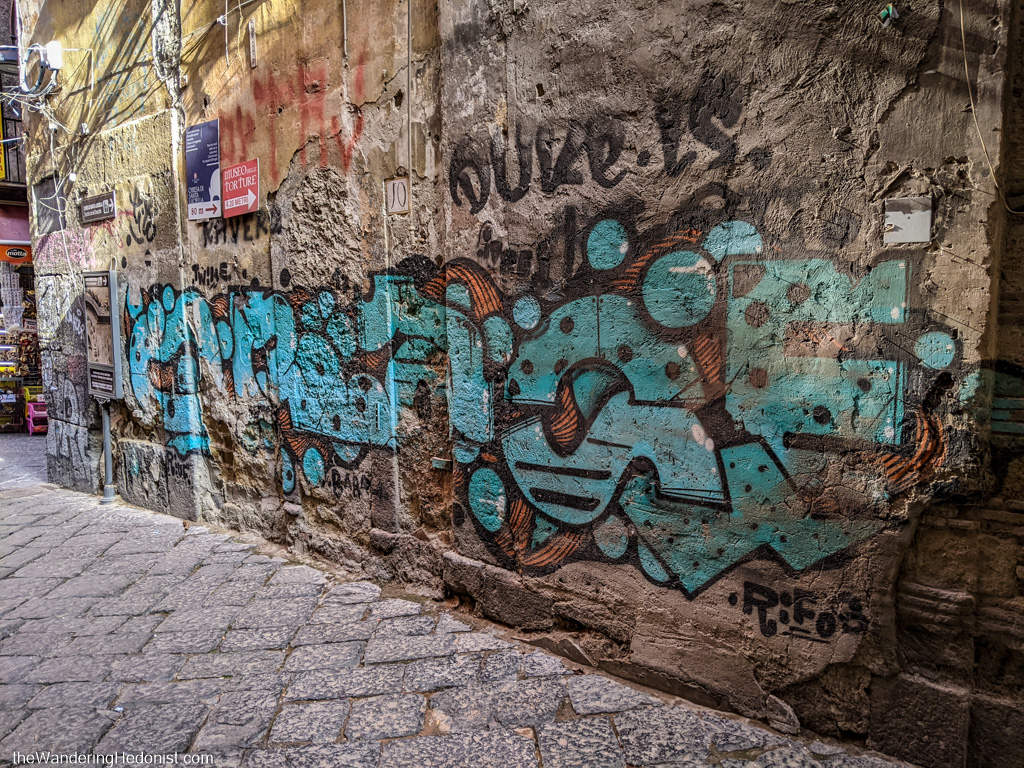

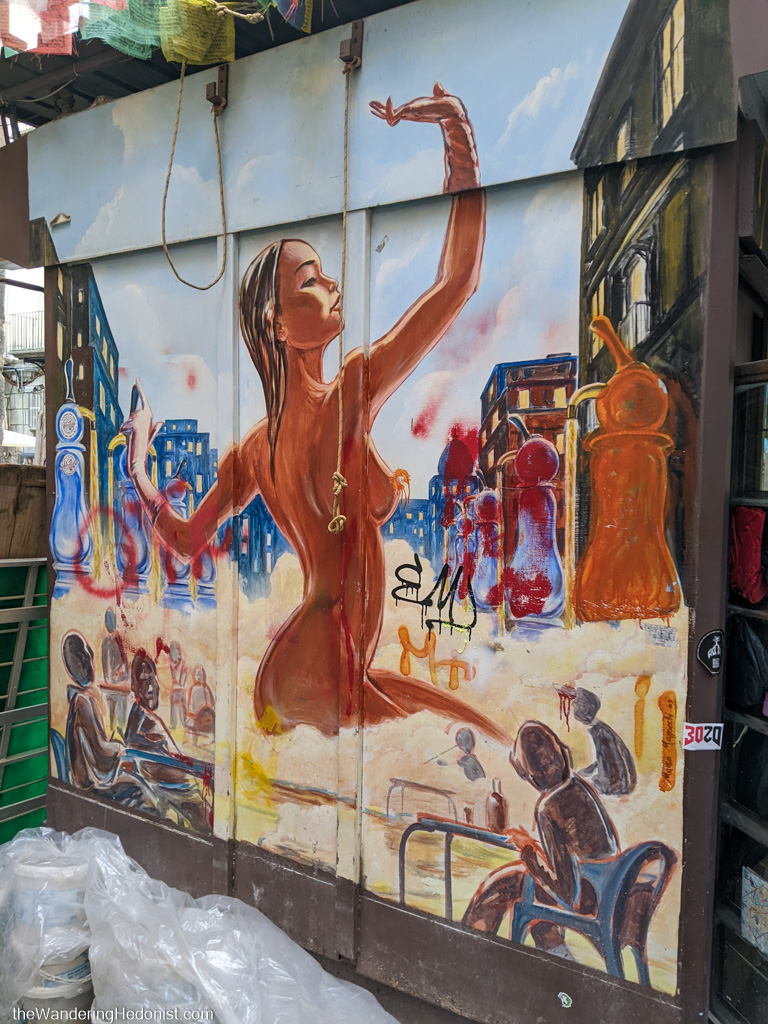

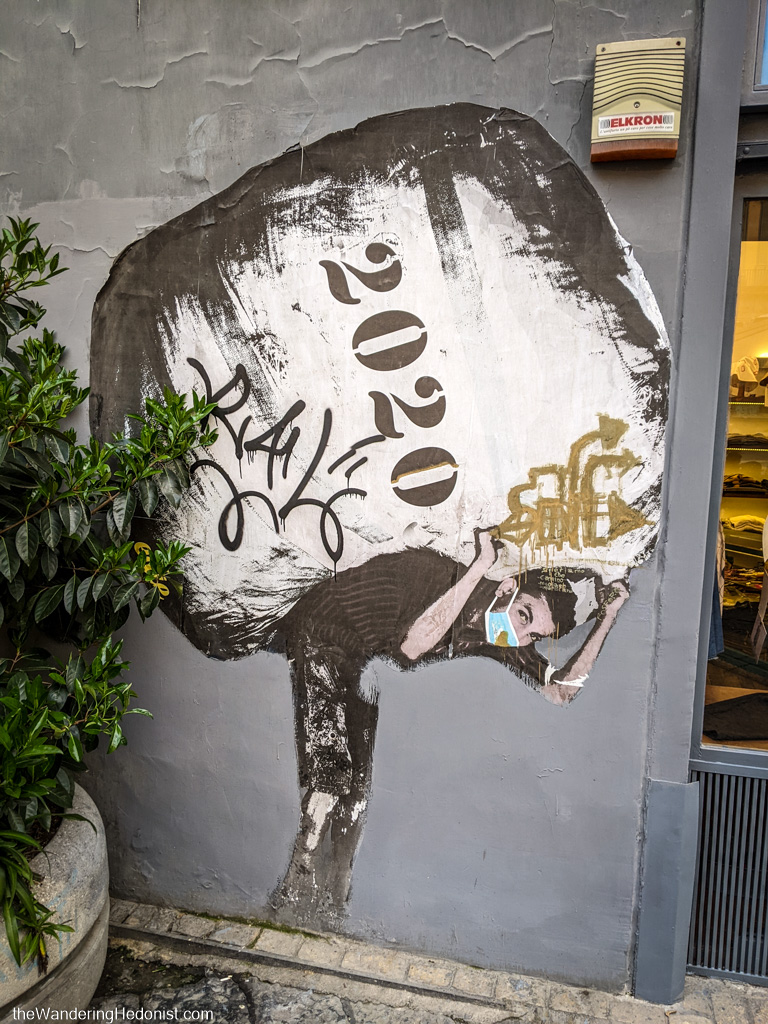
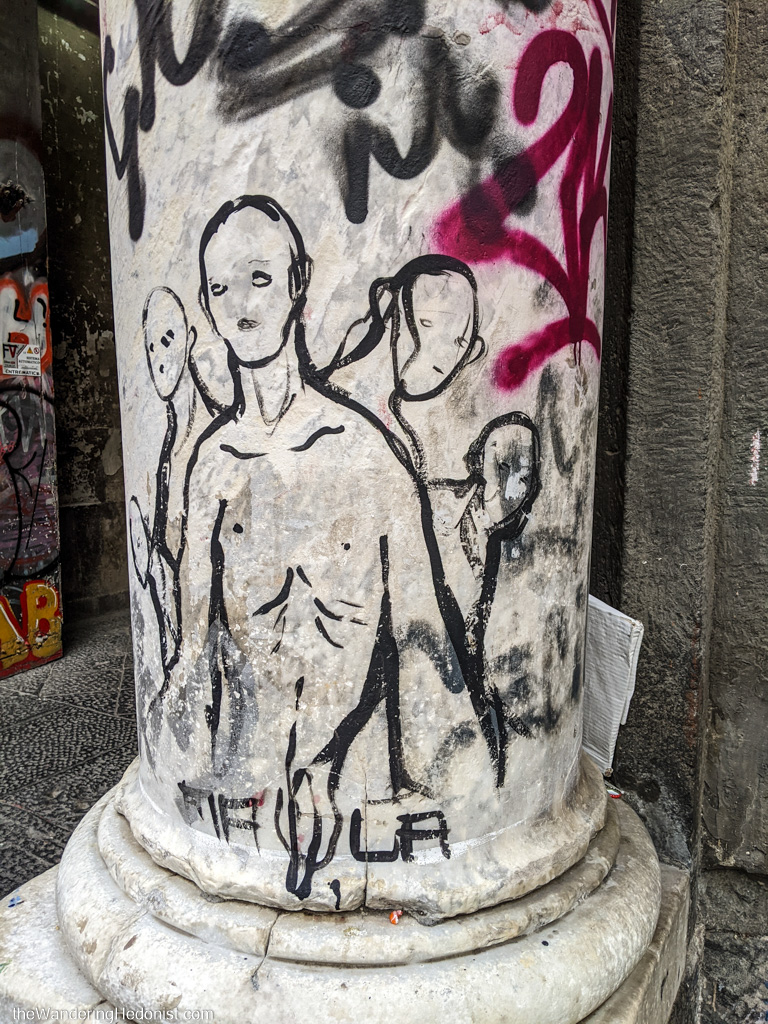











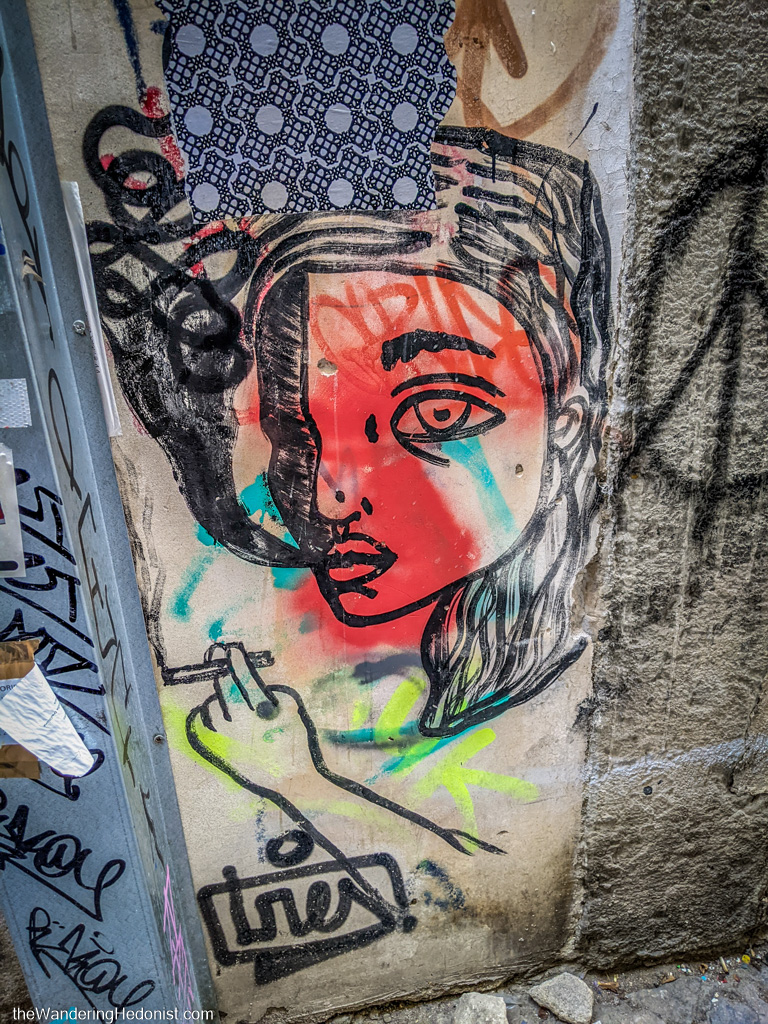
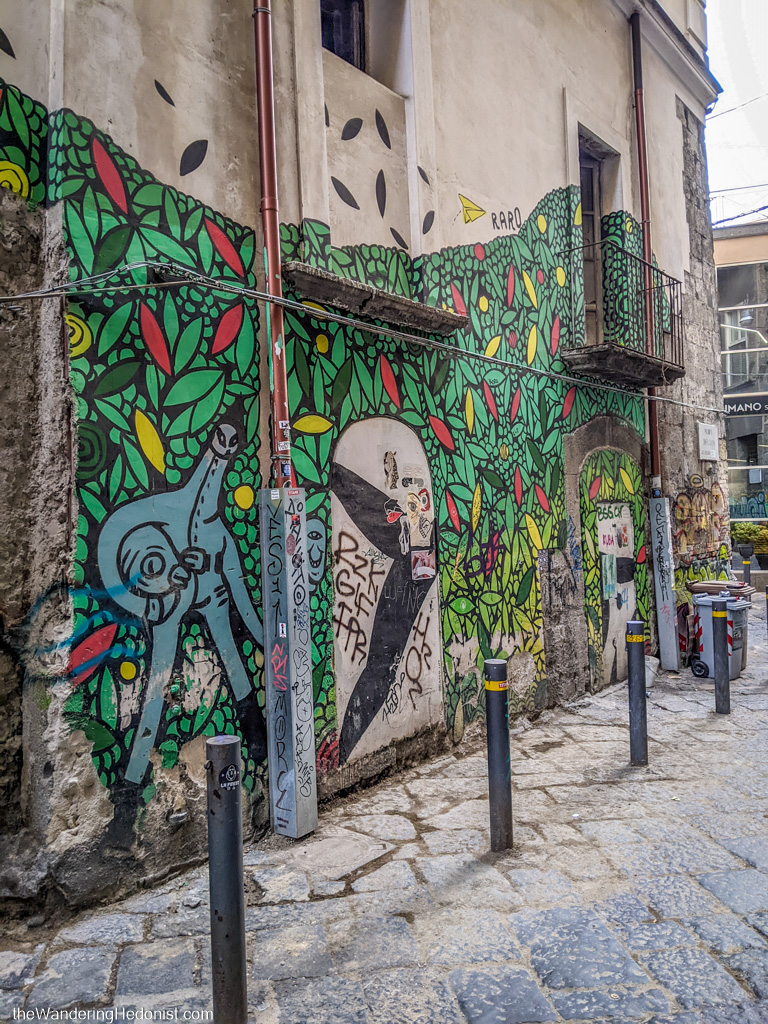



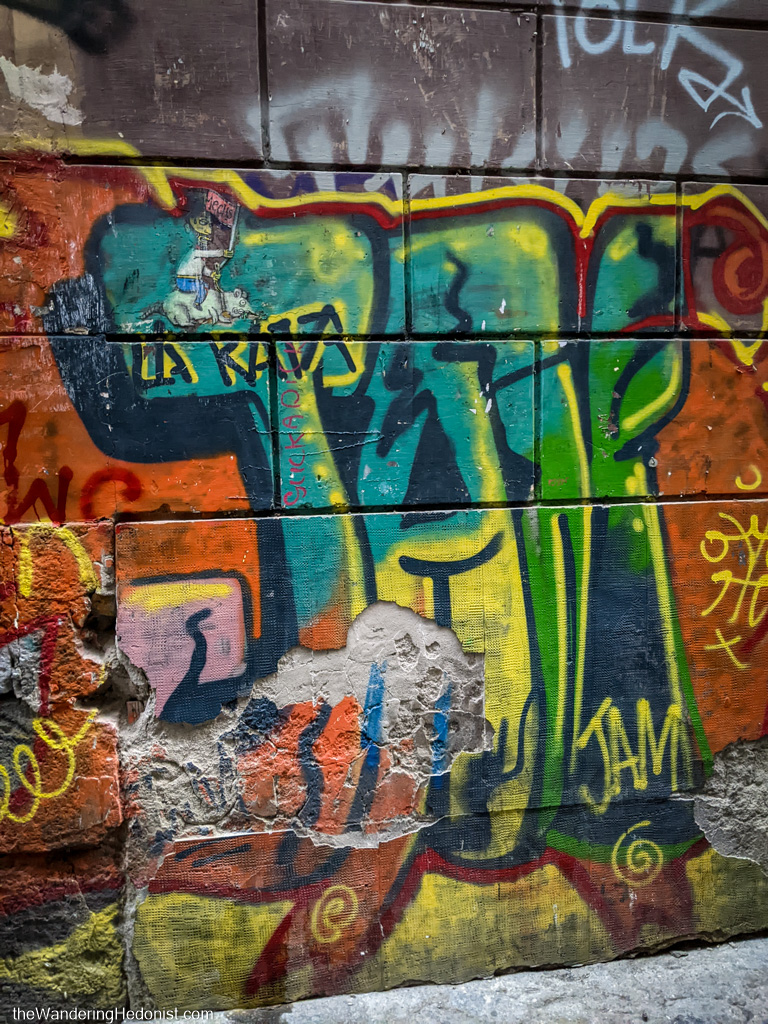


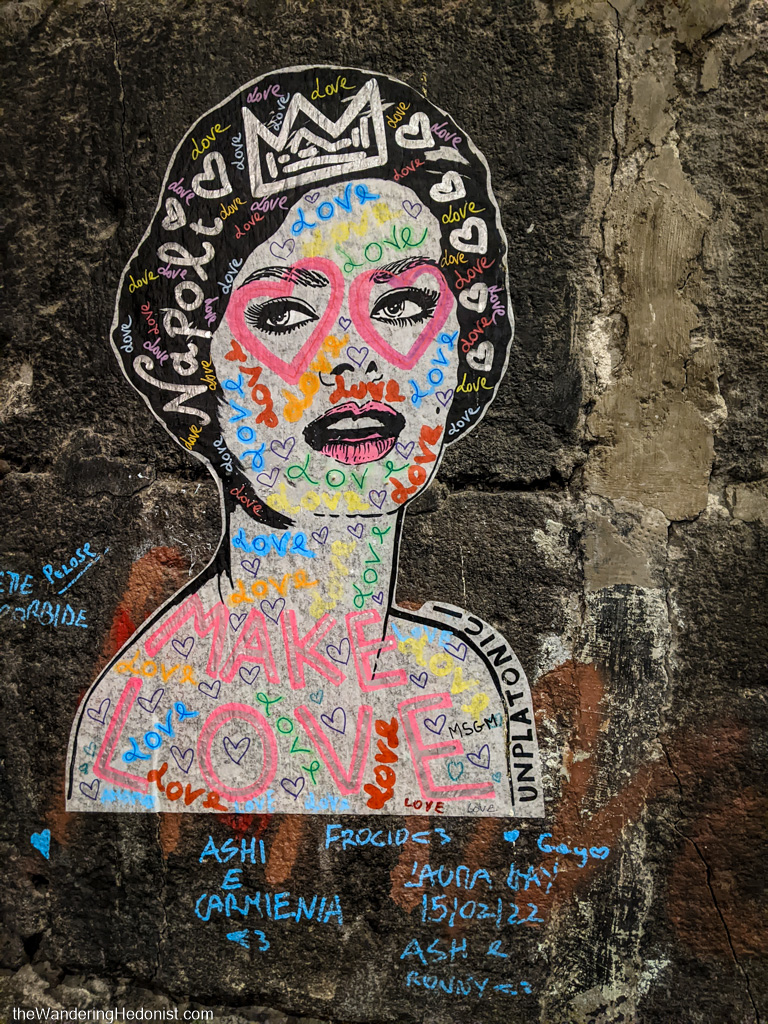





Leave a Reply